I realize this is content you did not ask for, but since it is unofficially summer now, I thought it was a good topic to bring up. After all, if you live in the continental U.S., running into the “three leaf wonder” known as poison ivy is a good possibility. I call it the "three leaf wonder" because it is an absolutely amazing plant, although certainly not in a good way.
Having worked outside for years, I've gotten very good at identifying it and want to share some of my knowledge since running into poison ivy in a natural area is pretty much a guarantee. For that matter, running into it in your yard, a local park, or practically anyplace else is also a great possibility. Since poison ivy can cause reactions in people that range from none at all to irritating to extremely serious, I think it’s good to learn to identify it.
I had actually planned for this post to contain information about identification plus some myths/facts, look-a-like plants, how you “catch” poison ivy, eradication, and some tips about after you’ve caught it, but this post quickly got out of hand, just like poison ivy plants can, and is too long as it is. So, I’ll have to save topics other than identification for an upcoming post. For now, this is Part 1 and we will stick with identification and habitat…. plus there is a photo quiz. :) I promise more is coming soon.
Quick heads up: there are lots of photos of poison ivy plants on this page. None of these photos would make a “Warm Fuzzies Wednesday” email. 😂🤣 I promise not to show any photos of rashes in this email or any other, nor tell bad tales about rashes or people getting into it. That information is out there on the net, believe me. I also promise you can’t “catch” poison ivy by looking at it, even though my mom swore she could. Also, this page is is about identifying poison ivy, not poison oak or sumac, neither of which I’ve ever seen.
So! Onward! Let’s start with what makes poison ivy poisonous in the first place, where this menace grows, then we’ll get into hard rules about identification.
What Makes Poison Ivy Poisonous?
Poison ivy plants contain an oily resin called urushiol (u-ROO-she-ol). The oil is in the leaves, stems, vines, berries, and roots of poison ivy. It is also in poison oak and poison sumac. It does not matter if the plants are alive or dead… they still have the oil in them.
The poison ivy rash is caused by an allergic reaction to urushiol oil. Not everyone is allergic. Although I’ll get into much more detail in a future email, poison ivy is “caught” after contact with the oil by some manner. This can be by touching a plant or vine or by touching something that came in contact with the plants, like petting your cat or dog after it rolled in a patch of plants, retrieving a ball that touched poison ivy plants, weed whackers throwing plant parts on you, or someone burning the vines or leaves… which is very dangerous. It takes very little oil to cause a rash in people. Most people don’t know they got into poison ivy until the rash starts. As I mentioned, just looking at plants won’t cause any issues. The oil does not jump off plants.
I promise to get more into “catching” poison ivy in the next edition, but for now let’s talk about habitat.
Poison Ivy Habitat
The first way to avoid poison ivy is to know where it grows… which unfortunately is nearly everywhere. Poison ivy is present in a vast portion of North America, It can creep, climb, lay low or bush out, create huge vines, and even cover entire trees. Poison ivy can grow:
In full shade (in fact, it seems to thrive there), in full sun, or in any lighting condition between.
In the woods, parks, meadows, fields, ditches, along tree lines, by highways, etc.
At the ocean (although it would be with other plants, not growing where it can be touched by saltwater) or near lakes, streams, rivers, etc.
On telephone poles, signs, fences, walls, and in or up trees and bushes.
On its own as a free-standing plant or bush. (That only applies to eastern poison ivy whereas western poison ivy creeps and is not supposed to be able to bush.)
In any soil - it has no preferences and can grow in anything from dry, sandy, clay-filled soil to dark, rich soil. It will even grow in rock beds.
As a creeping vine along the ground.
Basically, so long as there's some kind of soil, some sunlight and water, it will grow. I can't think of too many other plants that have all of those things on their resume.
It is not limited to wild areas, either. Poison ivy is fond of gardens and fence lines in your yard. It likes to grow against the house or garage or inside of your bushes and hedges. It can be hidden in with your other plants. You’ll see some photos showing where it was hiding in my yard further down in this post. It is well-camouflaged with its green color and can grow right along with other plants, making it difficult to spot.
Poison ivy is a perennial (which means it comes back every year), but it also can be easily re-seeded elsewhere, thanks to birds.
About the only place poison ivy usually does not grow, at least not for very long, is in mowed lawns. That's because mowers cut off the leaves. Poison ivy needs its leaves to make food through photosynthesis. Without food, it will die. This is why you almost never see it growing in the middle of a lawn. However, if you only weed whack a fence every couple weeks, poison ivy can try to move right in.
Now that we know it can be almost anywhere, let’s go on to identification.
Identifying Poison Ivy
The best way to avoid problems with poison ivy is to learn to identify it.
There’s a lot of criteria people use to identify poison ivy plants, but there are only three hard and fast rules that are always true about poison ivy and only those three rules can be counted on completely. (Note that the following criteria applies to poison ivy but not poison oak or sumac.) Those rules are:
1. Poison ivy always has 3 leaves
Poison ivy never has more than 3 leaves on each stem. If you see 5 leaves, 7 leaves or any number higher than 3 on a stem, you're not looking at poison ivy.
This is poison ivy. The correct way to describe poison ivy is to say each poison ivy leaf consists of 3 leaflets. The picture shows one poison ivy leaf (circled in orange). That leaf consists of 3 leaflets. Whether you call them leaves or leaflets, just remember there are always 3. Not more. Only 3. (“Leaves of three, let it be.”)
If you see a group of 3 leaves on a plant but also see a group of 4 or more leaves on the same plant, then that can't be poison ivy. Occasionally a poison ivy leaflet drops off and you'll have 2 in a bunch, but never more than 3. This is important because some of poison ivy’s look-a-like plants (lie raspberries, Virginia creeper, young box elder) can have 3 leaves on a stem/vine but more than 3 leaves elsewhere on the same plant, which rules them out. So, 3 leaves (leaflets) only.
2. Poison ivy does not have thorns
Raspberries, blackberries, and other bramble-type plants look very similar to poison ivy because they have 3 leaflets and even may have leaf "notches" like poison ivy can have, but they have thorns on the stems. Poison ivy stems are either smooth or hairy, but never thorny.
This photo clearly shows a plant with thorns, so this is NOT poison ivy. (It turned out to be wild raspberry).
Look in the lower right corner of the photo... there is a single poison ivy leaf there (with 3 leaflets). That IS a poison ivy leaf hidden in with the raspberry bush. Look out for that sort of thing because poison ivy frequently grows intermixed with other plants! At any rate, the main plant in this photo has thorns, so it is not poison ivy.
3. Poison ivy leaves are arranged alternately on the stem
"Alternately" means each leaf or group of leaflets doesn't grow right across from each other and usually alternates sides of the stem (in other words, as you're looking at the plant, one set of leaflets might be on the left side, the next set of leaflets on the right, the next on the left, etc.).
Alternate Leaf Pattern: Alternate leaves only have a single leaf (or group of leaflets) attached at one location on a stem, often the leaves alternate from one side to the other as they go along the stem or they may be in a spiral pattern. Poison ivy has three leaflets occurring alternately on the stem.
The poison ivy picture below shows alternate leafing. Notice the main stem and the leaves growing on one side and then the other:
Here’s another really great example of alternate leaf pattern, and yes, this is poison ivy climbing a tree. It’s good at that.
To differentiate, another type of leaf arrangement is called "opposite". Poison ivy leaves are never opposite of each other. (There is an exception, but only when the plant first sprouts from seed - we’ll get into that.)
Leaves that are arranged opposite are right across the stem from each other. Young Box Elder trees are often mistaken for poison ivy, however, you can tell the difference because Box Elder leaves are opposite.
Opposite Leaf Pattern: Opposite leaves refer to two leaves being attached at the same location on a stem, but opposite each other on either side of the stem.
Here’s a young box elder that is a good example of opposite leafing. Notice the 2 leaves right across the main stem from each other.
It also should be noted that we can immediately eliminate this as being poison ivy because there are more than 3 leaves on some of these stems. If any part of a plant has more than 3 leaves, it means the plant can’t be poison ivy.
Here’s another example of not-poison-ivy and opposite leafing. If you look straight down on a plant that has opposite leafing, you should see an X pattern. Also, once again we can eliminate this plant as poison ivy because there are 7 leaves per stem. This is a baby box elder tree.
Uncertain Identification Criteria
Now that we've learned the three hard and fast rules, here is other popular criteria for poison ivy identification. However, you can't completely count on these things to ALWAYS be true, so don't ever count on them exclusively.
Uncertain criteria #1: Poison ivy stems are red. Sometimes yes, but they can also be green or even woody. Here’s a plant with both green and woody stems:
Here’s a close up of the woody stems on a test plant I was growing:
Uncertain criteria #2: There is a red dot in the middle of the three leaflets. Sometimes yes, but some poison ivy plants are entirely green with no red any place on any of them. In the photo above (of the green leaves on a woody stem), there are no red dots. Here’s what red dots look like:
In the following photo, this plant has both red stems and leaves have a red dot in the center.
The red dot is not always obvious, and who wants to get this close to one of these plants to look for one?
Uncertain criteria #3: The stems have "hair" on them (dark tendril-like hairs). Sometimes yes, especially when the plant is trying to climb something. However, stems can also be slightly fuzzy or even completely bare or woody. If the stem does have “hair”, here’s what it can look like.
Here the “hairs” are on a vine running up a tree. This is what a zoom lens is for, folks.
Uncertain criteria #4: Leaves are shiny and/or somewhat red. Maybe, but leaves can be light green, yellow green, dark green, orangish, reddish, or even brownish. Leaves might be oily-looking or they may be dull. Sometimes they can even be multi-colored (green with yellow or brown spots) if the plant has been out in hot sun for too long. They can even have growths on them, like round bumps.
This is a pale green plant next to a darker green one. (The plant at the base of the poison ivy plant on the right is not poison ivy.) Notice that this is growing in between rocks. This was also growing under a rail road bridge and was getting little sun and little water. This stuff is adaptable. So, even in the same location with the same conditions, the plants can be different colors.
Uncertain criteria #5: Leaves have a notched pattern and side leaves (leaflets) look like mittens. Although notches are common, leave sides (margins) might be smooth or slightly toothed. Leaves can be short or long, thin or fat, large or small, curly or straight. Worse yet, leaves can look very different on the same plant.
Some people think the two side leaflets look like mittens. They might or might not.
These leaves are very, very notched on the large plant, but not on the little leaves. This is one plant with two different styles of leaves, but my guess is the little leaves will grow up to be notched like the big leaves.
These leaves are also notched:
But these leaves are not notched much or at all:
Uncertain criteria #6: Poison ivy has white (or very pale yellow) flowers and white berries. This is true, but the plant might not be in bloom or have berries at the moment.
Yes... poison ivy blooms! It has small white-yellow flowers that later turn in to white berries. ("Berries white... run in fright!") Birds eat the berries (with no ill effects), poop out the seeds that were inside the berries, and bingo... you have poison ivy in your garden! Here are the flowers. I don’t believe they smell and I was not going to try to find out. Note that only very mature plants bloom. This plant was actually the size of the tree it was growing up. No joke.
The flowers produce green berries that later turn white.
That’s pretty much it for uncertain criteria. Always stick with the 3 hard and fast rules to start with, then you can move on to the uncertain identification criteria.
So, speaking of identification and habitat, here are some photos of poison ivy in various places and growing in various ways. Most of these photos were taken at a park, but a couple came from my yard.
Poison Ivy in the Sun. Poison ivy that grows in full sun is generally lighter in color and has more red than ivy that grows in shade, but this is not always the case. Ivy in full sun can often have leaves that look "wilted" (like a plant that wants water), although this plant does not.
Poison Ivy in the Shade. Poison ivy in shade can often have a deeper green color. My friend has ivy growing under their bush in full shade and it's a very dark forest-green color. Note that the stems are all green and there is no red center on any of the leaves in this photo.
Newly Sprouted Poison Ivy. Baby poison ivy that has sprouted from seed breaks the identification rules. Namely, it breaks the alternate-leaf-arrangement rule and the 3-leaves rule (see the small two leaves at the base). However, neither of these conditions last for long as the plant grows. And yes, I was purposefully growing this plant… for education purposes, of course.
This one was starting in mulch. You can see how tiny it it.
Poison Ivy Vines. Poison ivy vines are hairy and very woody. They can get quite thick and large over time. The vines are just as toxic as the leaves, so don't touch. (“If it’s hairy, it’s scary!” or “Hairy vine, no friend of mine!”) They have dark, tendril-like hair that helps hold the vine hold on. Really thick vines will have large canopies of leaves on their top, almost like a small tree.
Lots of vines!
The worst part is if the plant gets mature enough, some of the hairs may not be present. You can see this large vine has hairs on it below the branch on the left but not so much above it. Lesson: just don’t touch unknown vines.
New Red Leaf. A new leaf is forming. Sometimes young leaves are red (especially when the plant is in full sun) but sometimes not. All of the leaves in the photo are of the same poison ivy plant, but note that some are shiny and some are not. And some are curled… some are not. The whole thing is poison ivy.
The top leaf is the “wilted” style I mentioned.
Curly New Leaves. Another set of new leaves on an established plant. These are curly, but still poison ivy. Poison ivy leaves sometimes has an oily sheen, as in this photo, but sometimes they are dull and not shiny.
Tall Poison Ivy. Poison ivy can grow quite tall when it is freestanding. This plant was about 4 feet tall and was surrounded by smaller plants. Supposedly only the eastern poison ivy plant can bush like this and the western poison ivy can’t, but then again, they have poison oak to watch out for out west.
Here’s another poison ivy plant that has grown into a bush of trouble:
Poison Ivy Climbs. Poison ivy vines attach themselves and the plant just keeps climbing up. Vines can grow on fences, trees, up telephone poles, the sides of houses... wherever it can attach itself. The tendril-like hairs are very sticky and lets the plant easily attach to things.
This tree (in the center) was dead. Everything you see green on it is poison ivy.
Attached to a utility pole. I sure would not want to work on that pole. Update: this photo is about 10 years old. Since then, this pole was replaced and the ivy went away with the old pole. However, the plant was not killed and it is growing up the new pole. I’m not sure if that is funny or not!
Very Large Leaves. Poison ivy leaves (leaflets) can get very large. Regardless of the size of a leaf, it's still toxic no matter what. Also notice the shape of these leaves on the second photo, more lobed than notched, but is still poison ivy. No, I was not touching it!
Poison Ivy: The Master of Camouflage
Ok, so hopefully you’ve got a good idea of what it may look like. However, one thing that seems to cause people a lot of problems is that poison ivy hides alongside other plants. Since nearly all plants are green, at least until the fall, this means poison ivy hides well with those green plants. If you are not looking for it, you may touch it before you know it.
Let’s play Find the Poison Ivy. What I’ll do is show you a photo first. You try to find the poison ivy. After you think you’ve seen it, scroll down because the very next photo will be the same photo with the the ivy circled in it. Hopefully these photos will be large enough on a phone but you may need to zoom in.
Remember, look for leaves (leaflets) of three!
OK, here we go. Don’t scroll too fast!
#1. Where is it?
Here it is, circled in orange. Tiny but mighty!
Here’s #2. Where is it?
Once again, in the middle looking too young to do anything bad, but it can.
Here’s #3.
There are two woody stems with leaves attached along them, which is what I tried to circle in the center. The ones partially circled on the edge are likely ivy as well, but for sure the two in the center are.
The rest of these photos won’t be this easy :)
#4. Here’s one of my boxwoods with an unwelcome visitor.
The large one on the left is obvious, but do you see the one hiding behind it or the one on the lower left of the orange area? This is a case where a leaflet is actually missing and there are 2 leaves instead of 3. In the upper part of the drawing, you can see poison ivy leaves are hiding behind the boxwood leaves.
#5. Here’s a photo of a plant called jewelweed (center), which I will get into in another email. Jewelweed almost always grows with poison ivy in nature. It has been used in natural medicine as an antidote to the rash. Where’s the ivy?
Well, it’s pretty much everywhere.
#6. Here’s a plant called Virginia Creeper, which I’ll get into in another post. It is very often mistaken for poison ivy. However, there is poison ivy there. Where?
This is the only poison ivy. I know other things look suspicious here, but they are not poison ivy.
#7. Where is it and where do you think it could also be?
The red leaf is obvious, the greenish one a little bit less obvious, but the areas with the arrows also have poison ivy.
#8. What’s poison ivy and what is not?
The stuff on the left is Virginia Creeper. We can eliminate it as poison ivy because there are 5 leaves, but notice it climbs trees just like poison ivy. The stuff to the right of the orange area is also likely poison ivy, but it’s hard to tell in this photo.
#9: Now what do you see?
With the exception of the orange marks, everything here is poison ivy. The orange marks are over burdock leaves plus there is a baby maple tree in there.
#10: And last, where is the poison ivy? Because you are at an unfair disadvantage here, I will tell you that all leaves growing up the tree are on the same vine.
Answer… there isn’t any. Trick photo, sorry. This is Virginia Creeper with some jewelweed at the base of the tree. Had you seen this plant in person, you could see all of the leaves on the tree were on the same vine. Yes, there are some very suspicious red leaves, some shiny leaves, and some groups of 3. But because all of those suspicious things are on the same vine with leaves in groups of 5, this can’t be poison ivy. That’s not even close to possible.
I’ve pointed out the groups of 5 leaves that are on the same vine with all the suspicious stuff.
We’ll get much more into Virginia Creeper in an upcoming email. Brushing up against it is not going to cause a problem, but you probably should handle Virginia Creeper with gloves. Although it does not have a chemical oil in it, it has calcium oxalate crystals that can cause a rash because of their physical properties as opposed to chemical properties.
Anyhow, I hope this post helped your poison ivy identification skills and I hope you never have the fun of getting into it!
In the meantime before the next email, if you think you touched it, just wash off the area as soon as possible with lukewarm to cool water (not hot). The oil takes about 10-15 minutes to bond to skin, so after I got into ivy last week under a tree (in an attempt to remove it), I went right inside and washed my arms. No problems - I got it off quickly enough.
Stay tuned for future topics of poison ivy myths and facts, look-a-like plants (including Virginia creeper), how you “catch” poison ivy, eradication of the plants, and some tips about after you’ve caught it… which is hopefully never. :)




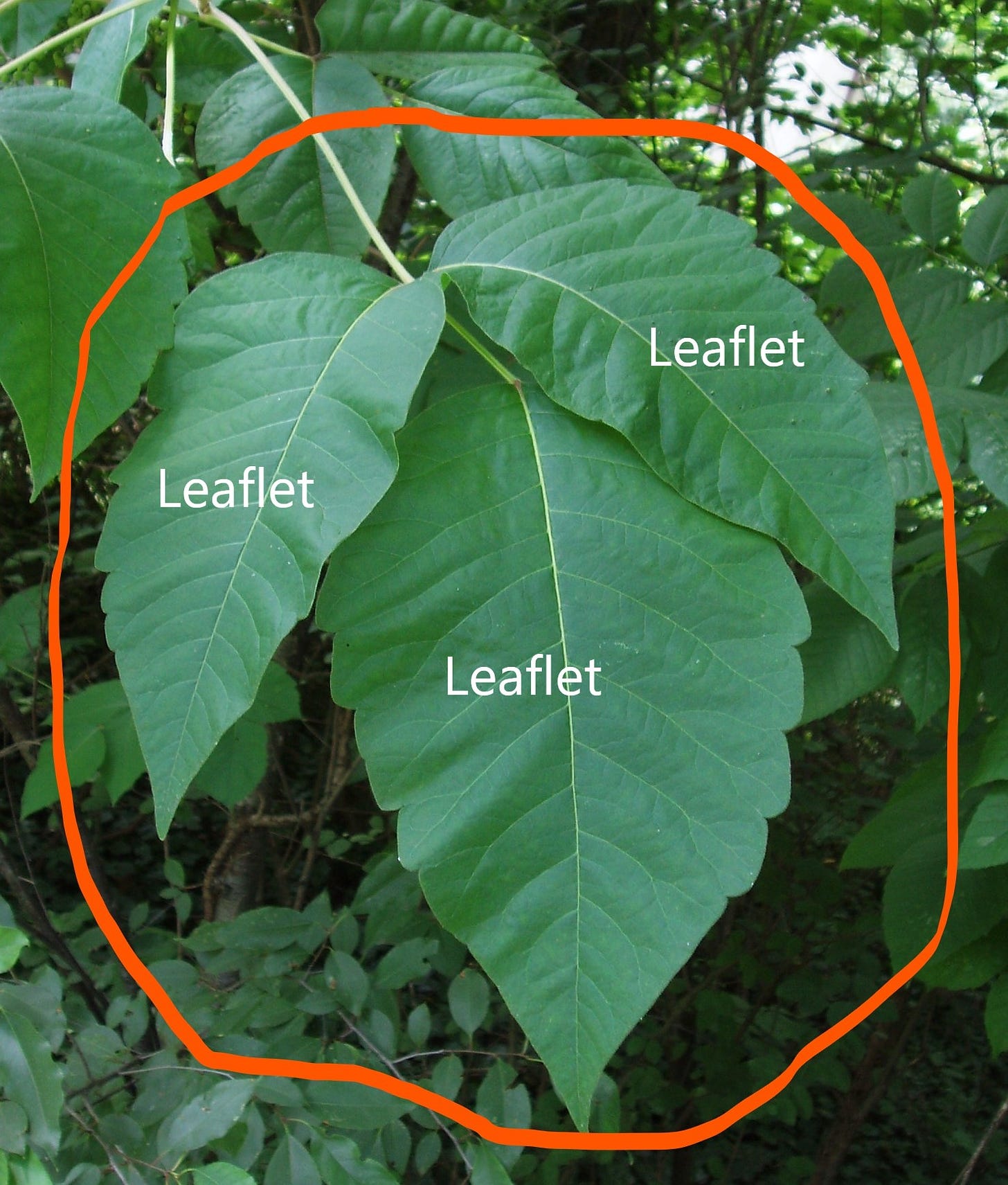
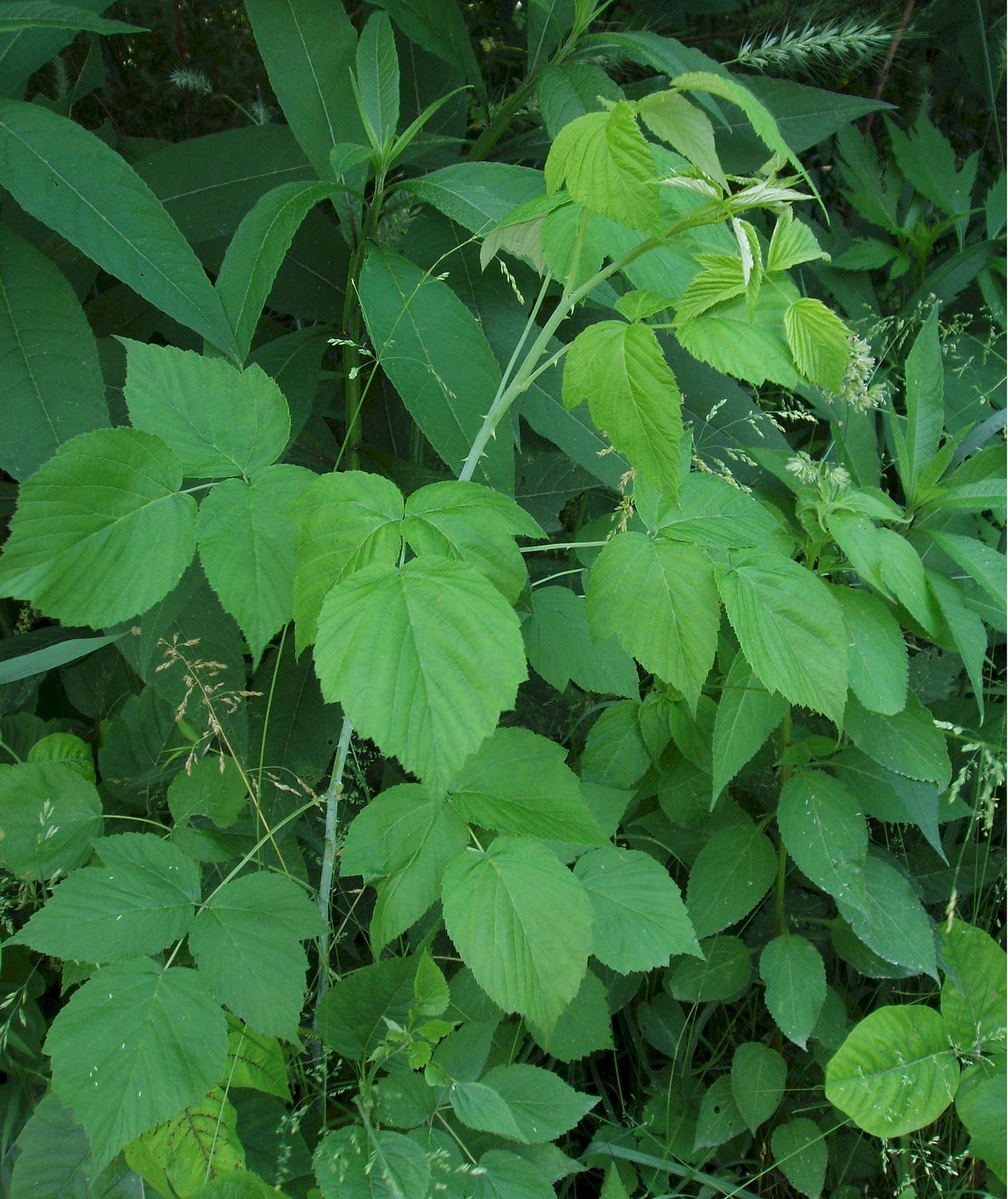
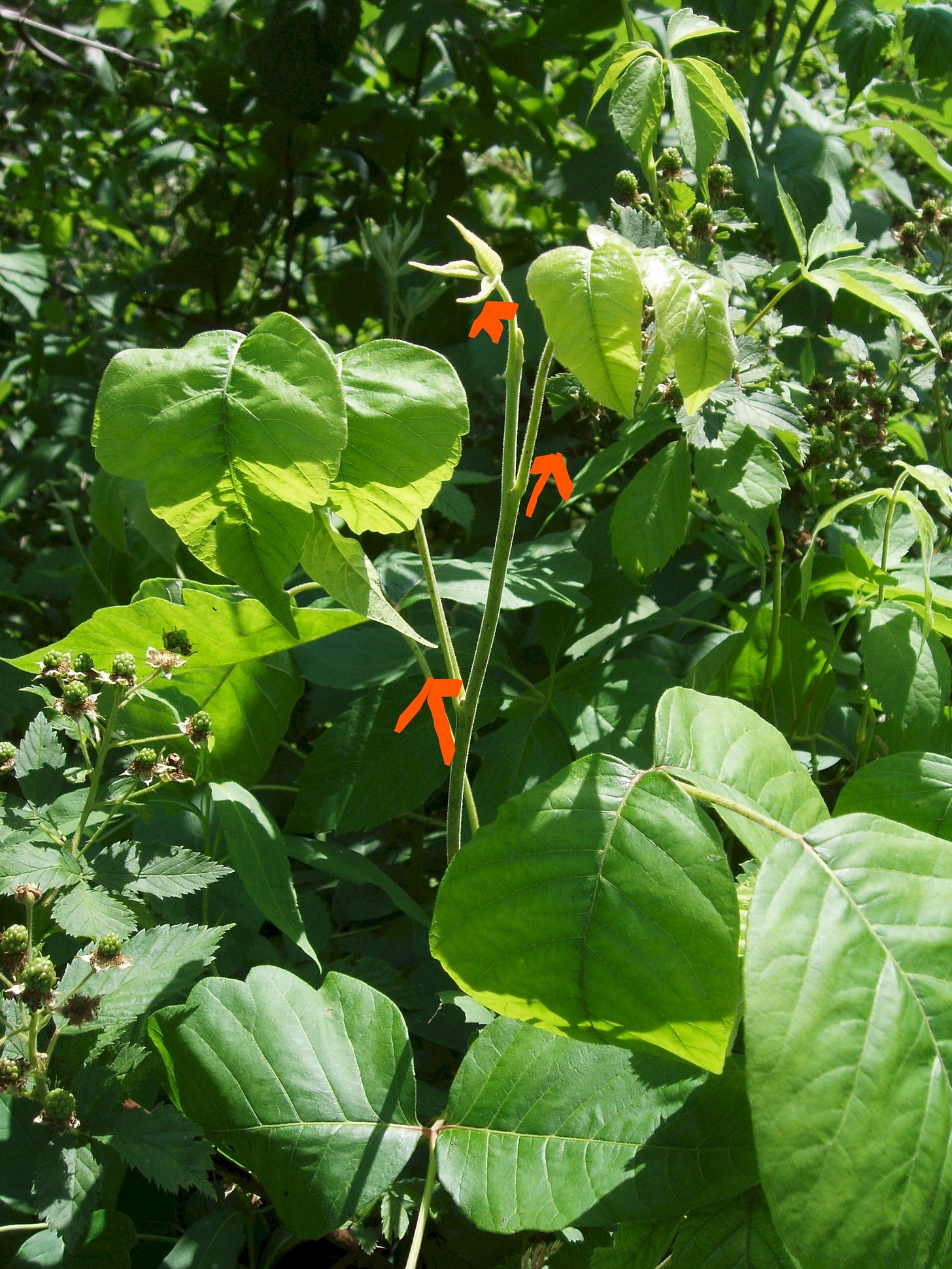
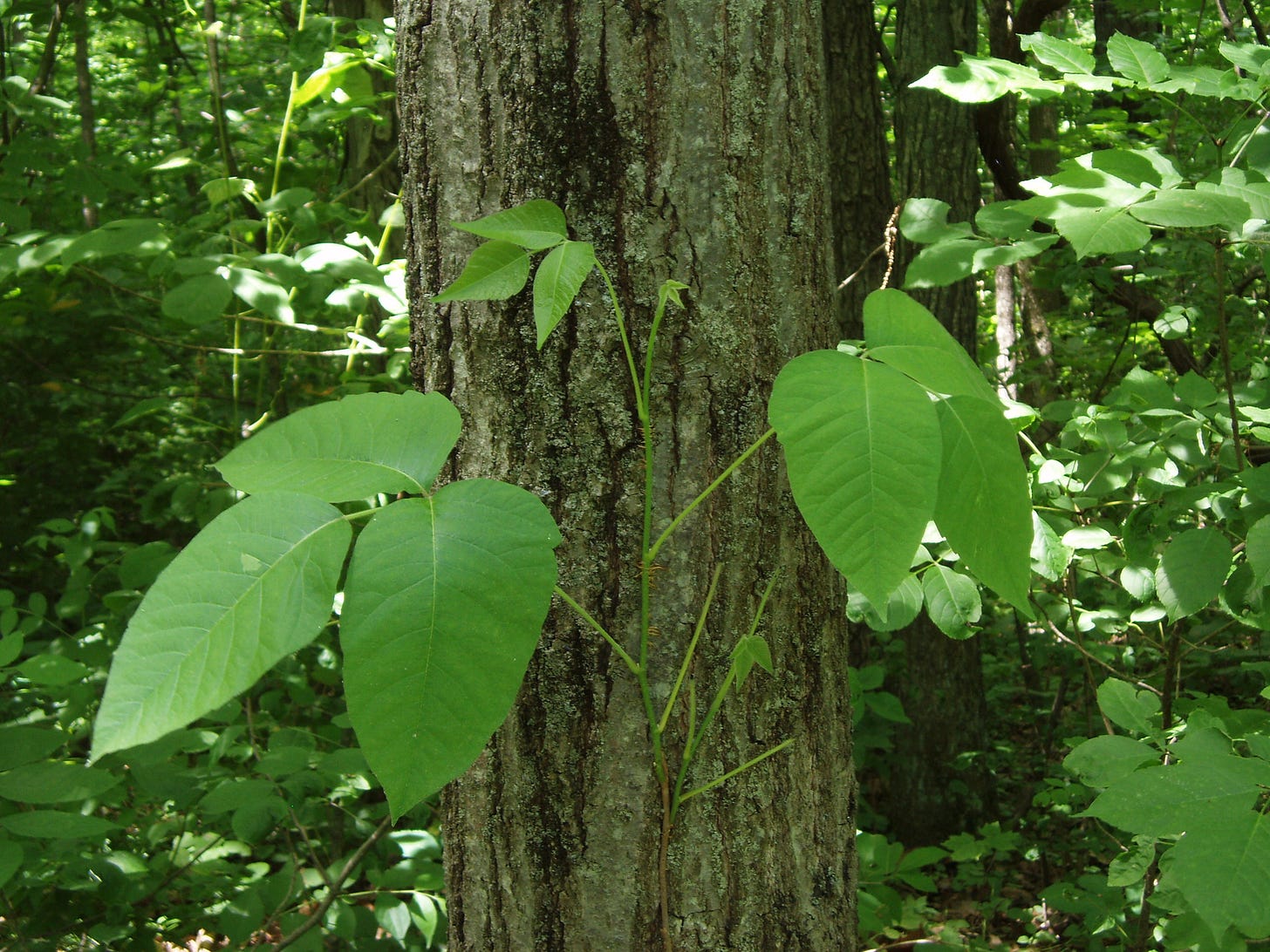
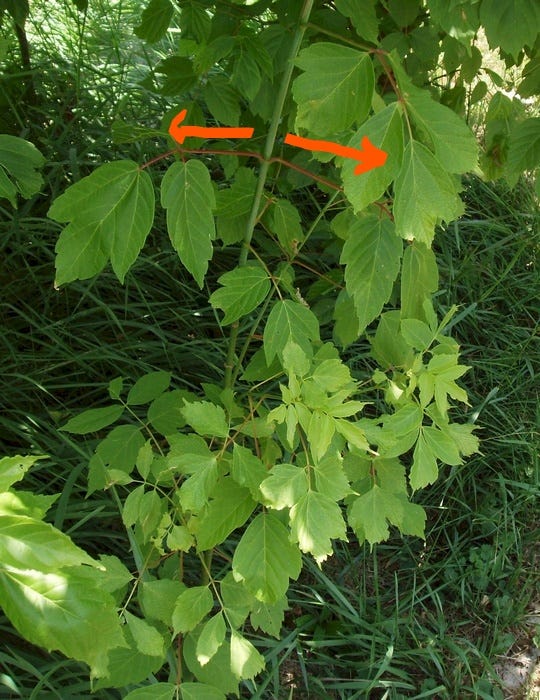
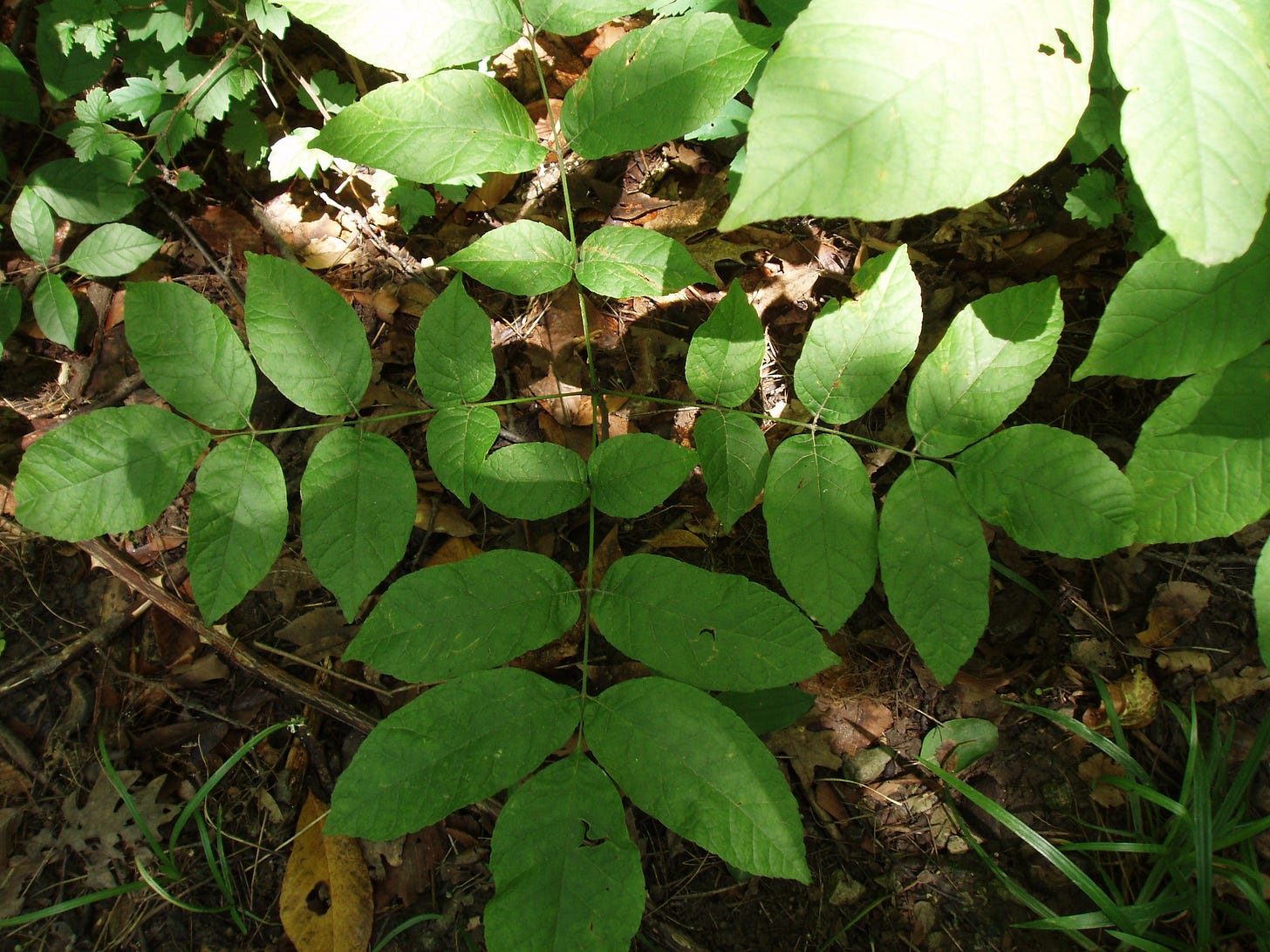
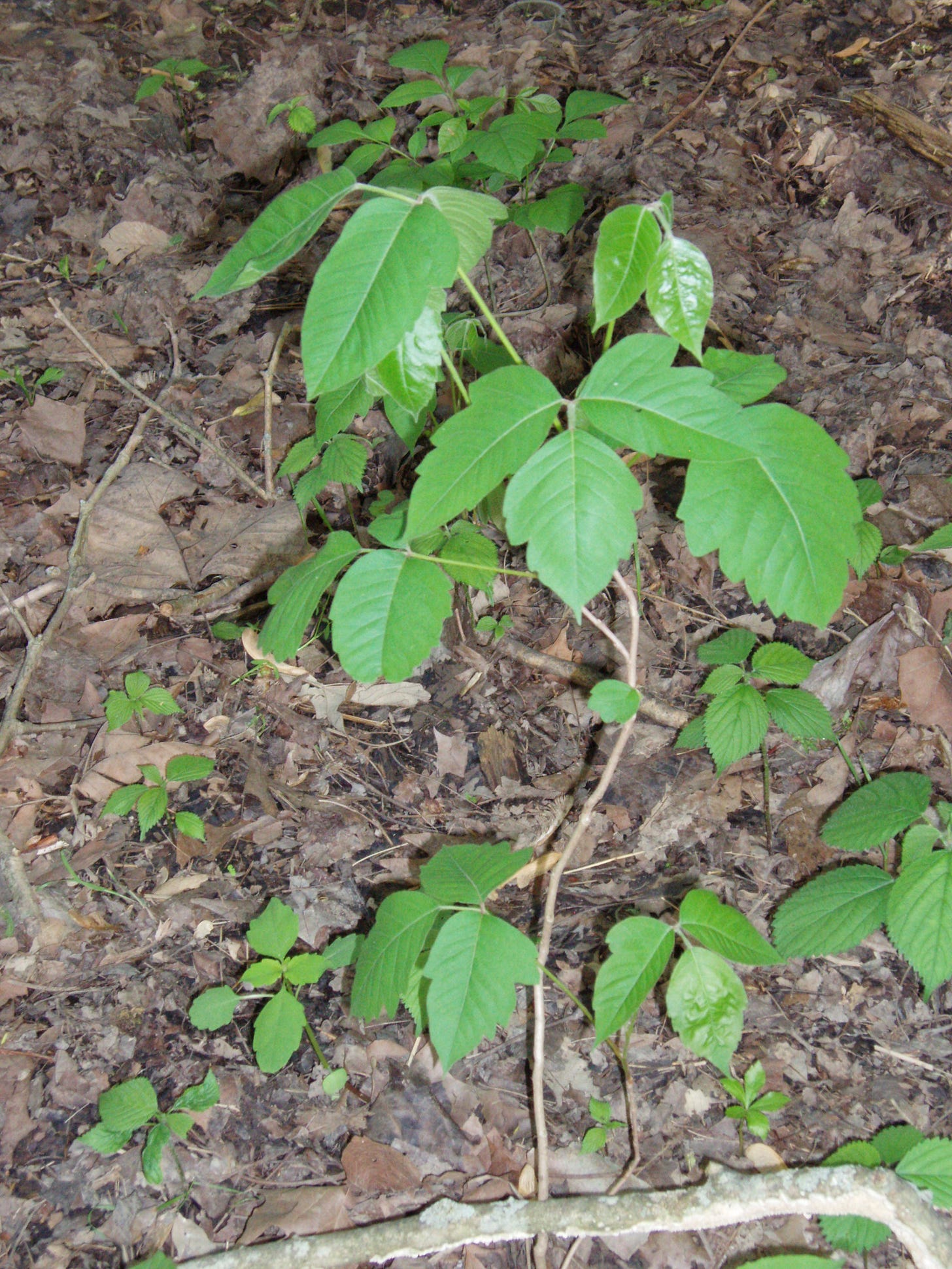
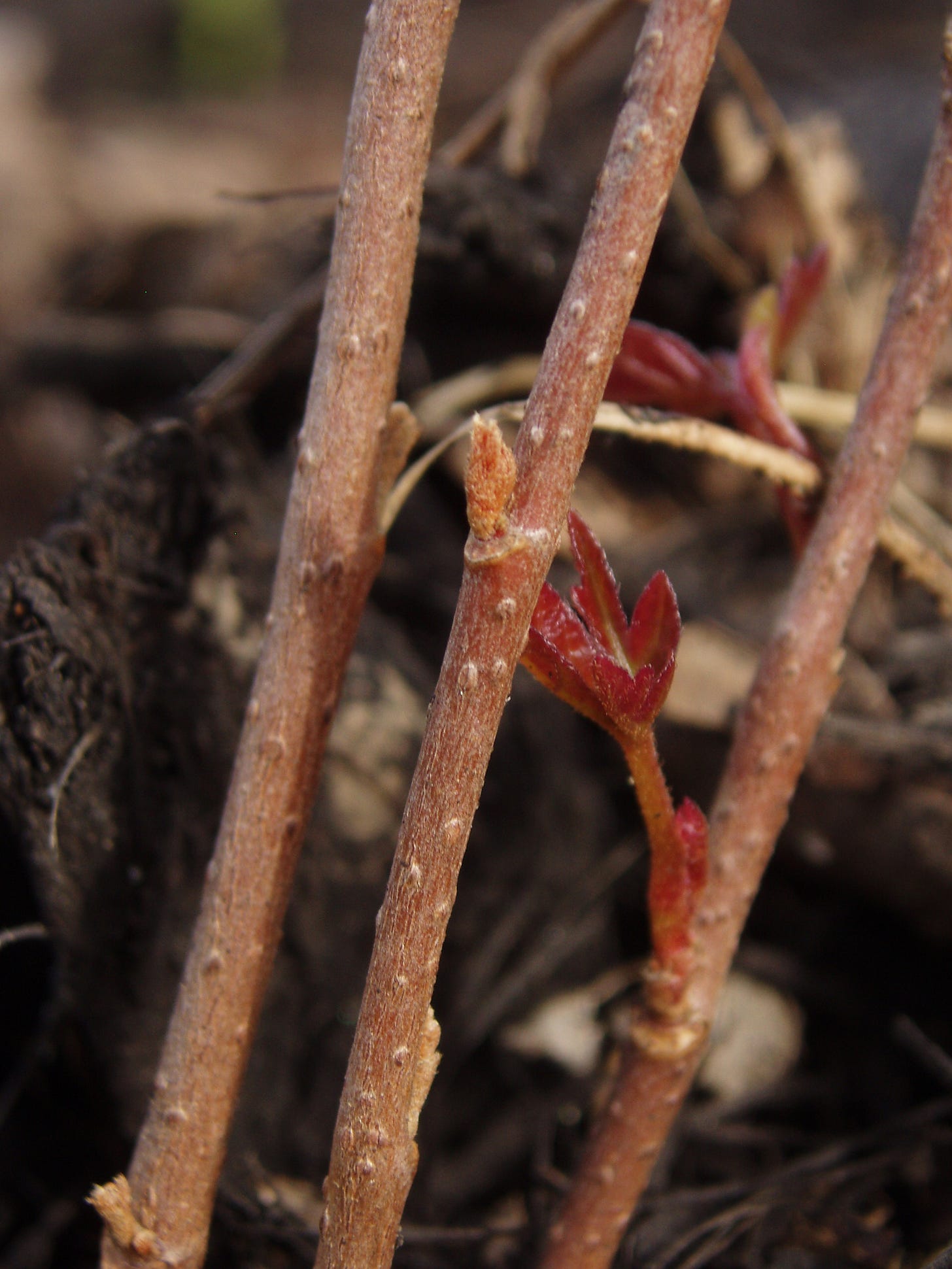


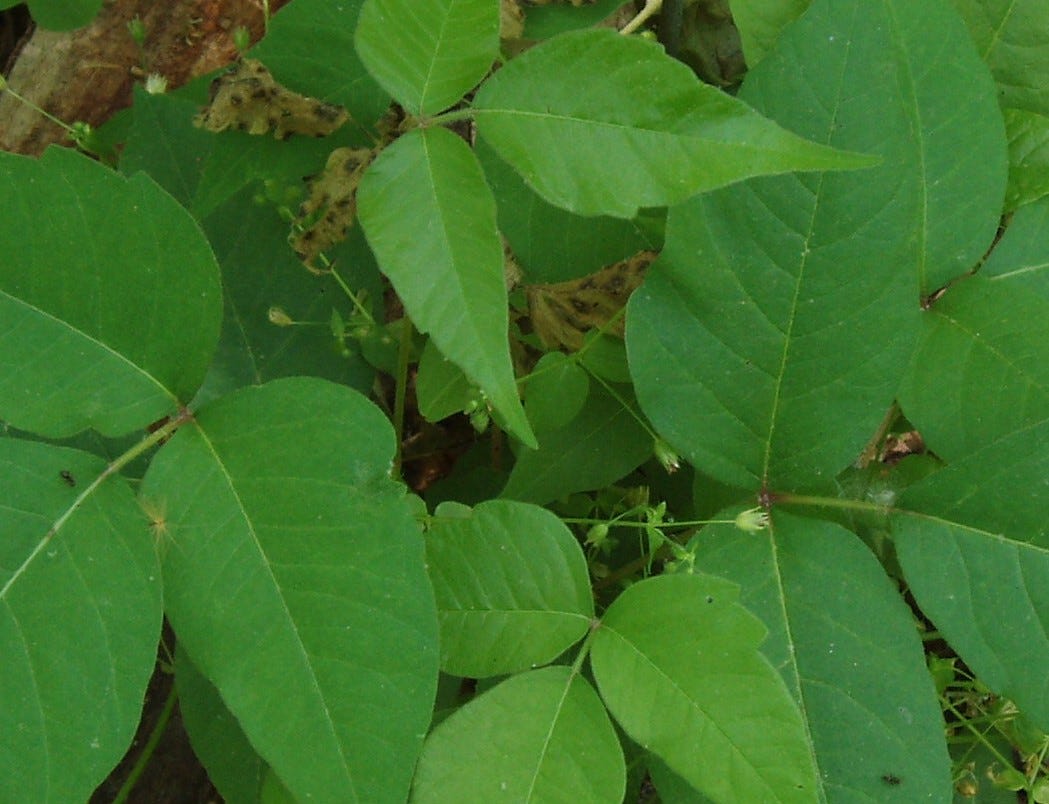
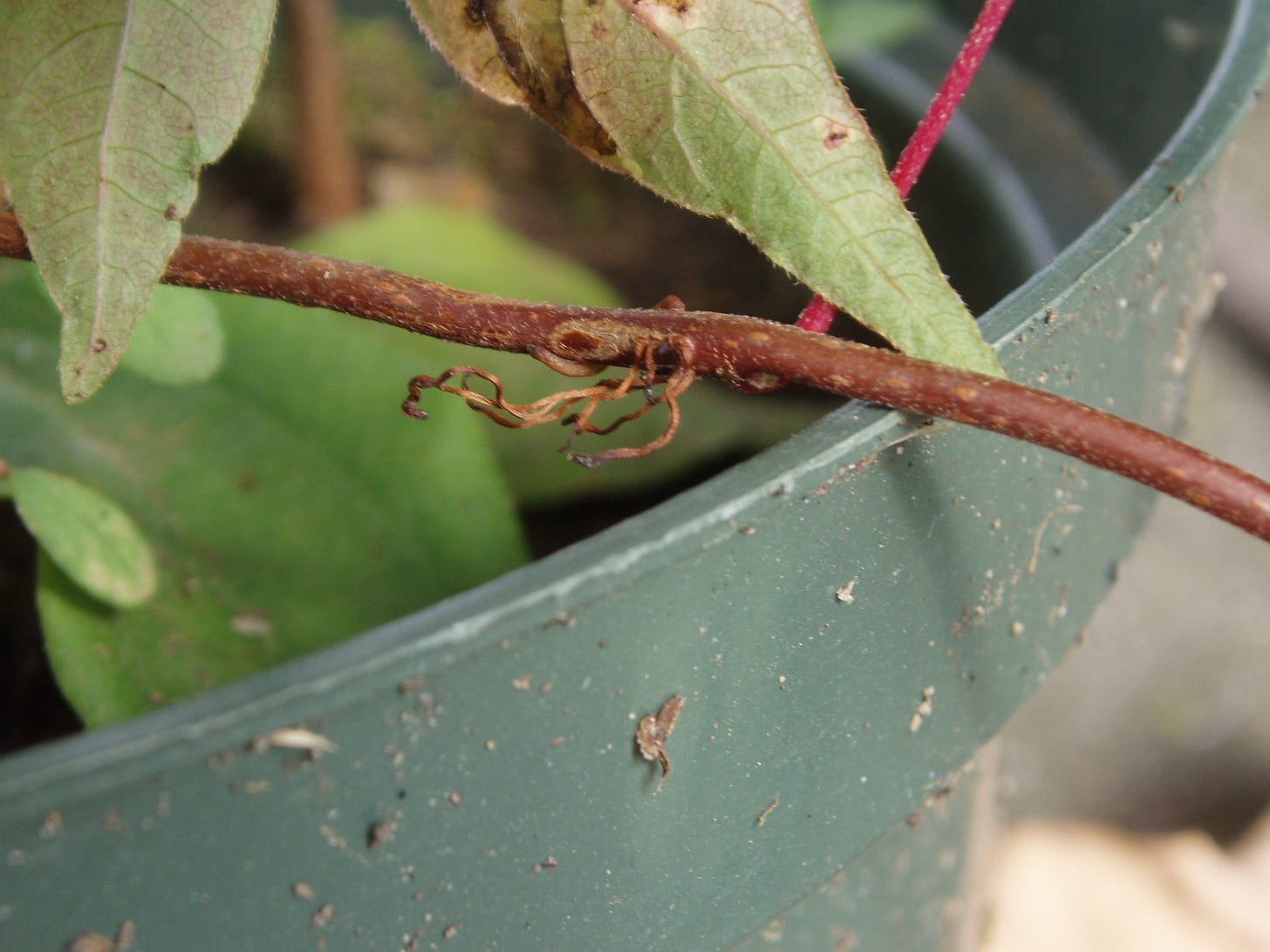
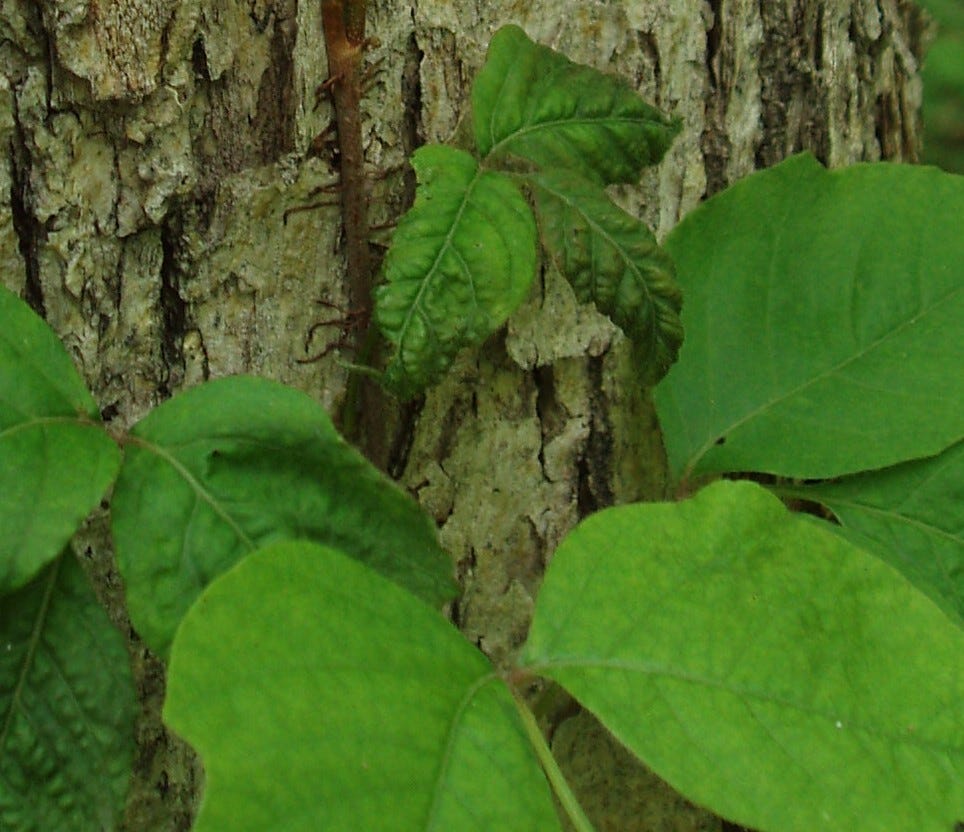
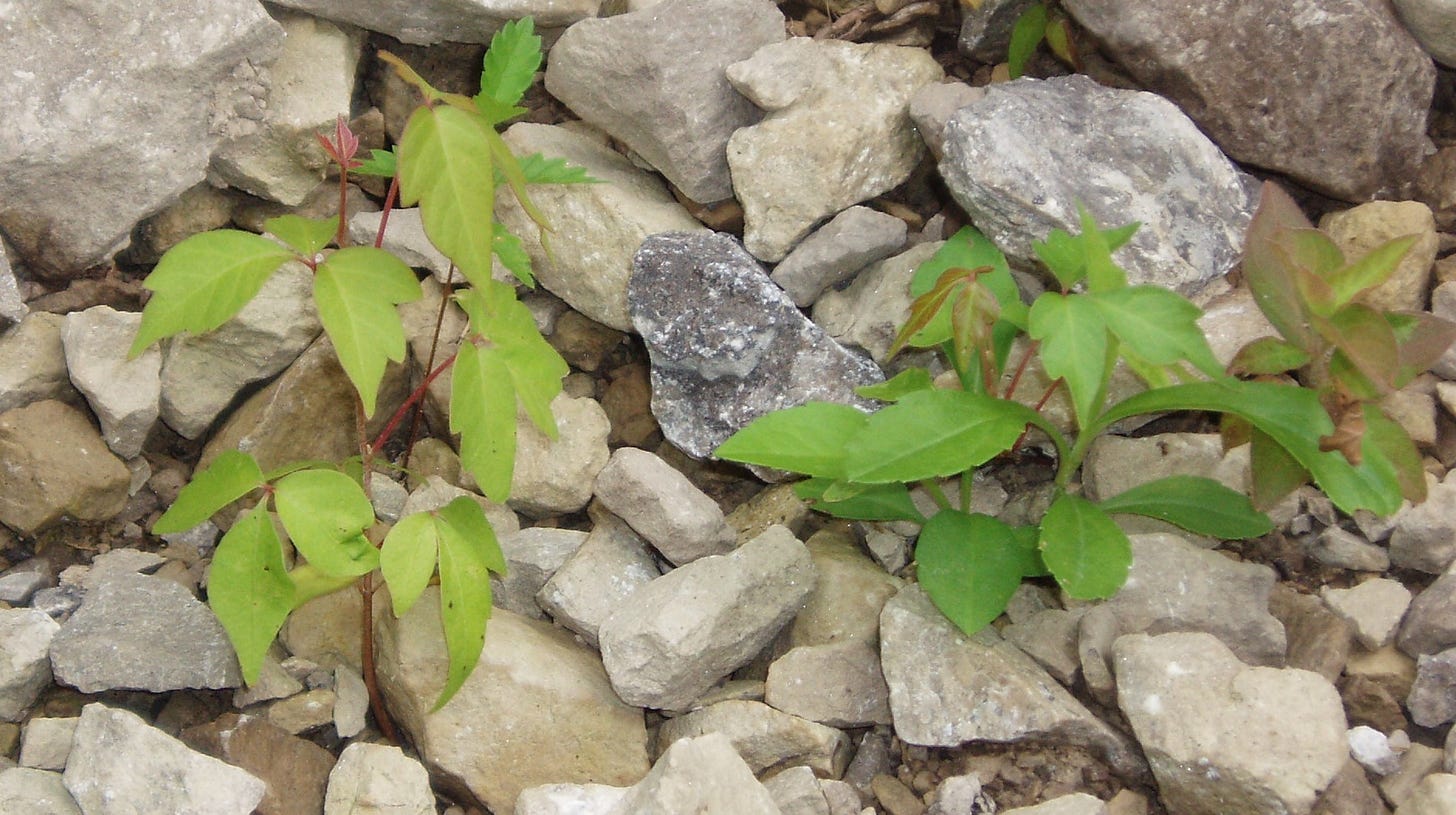
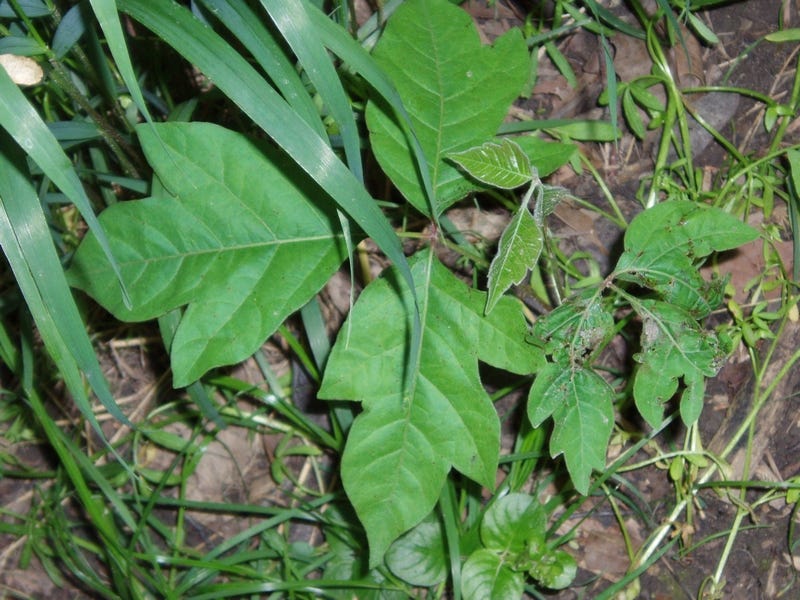
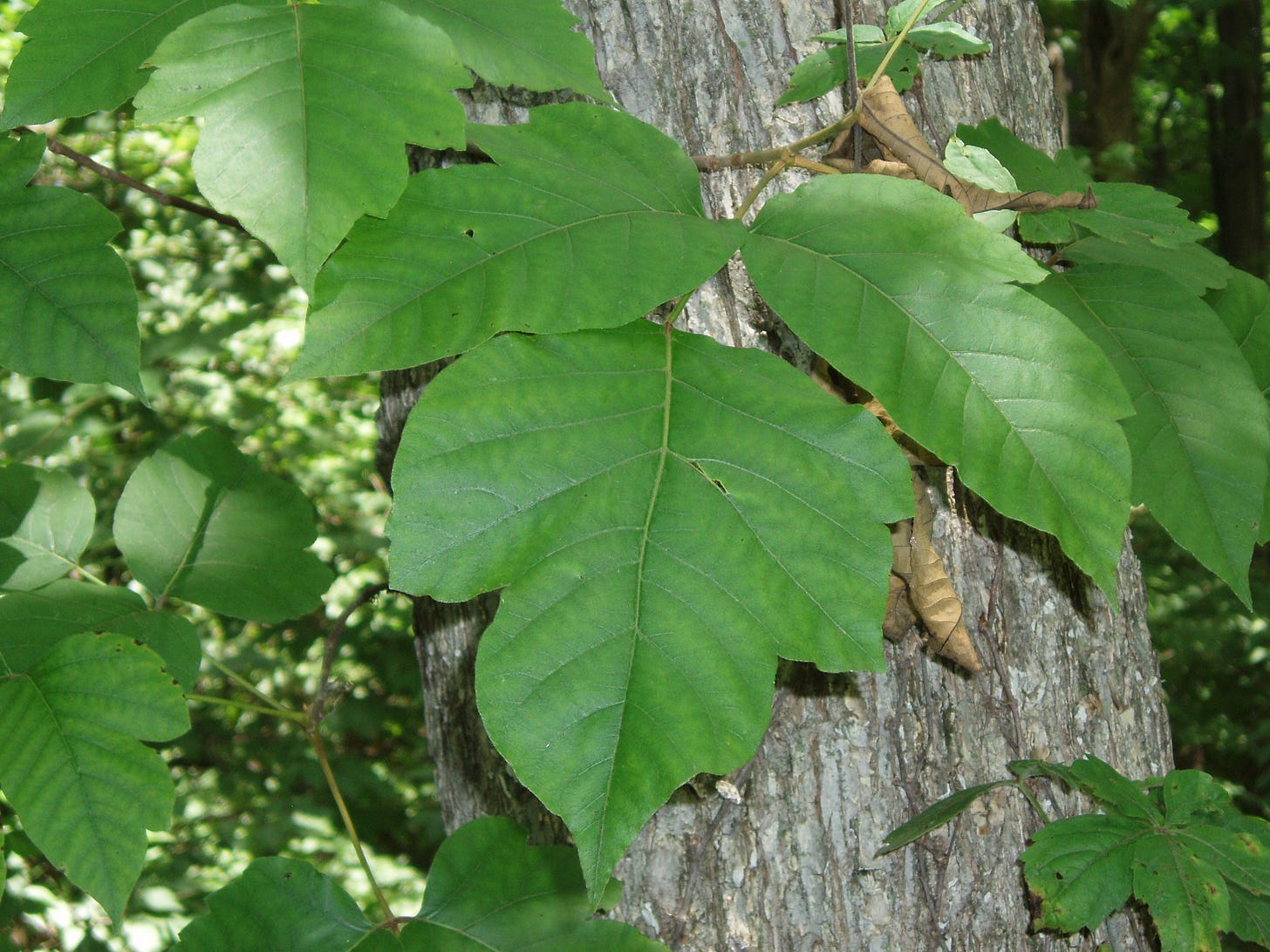
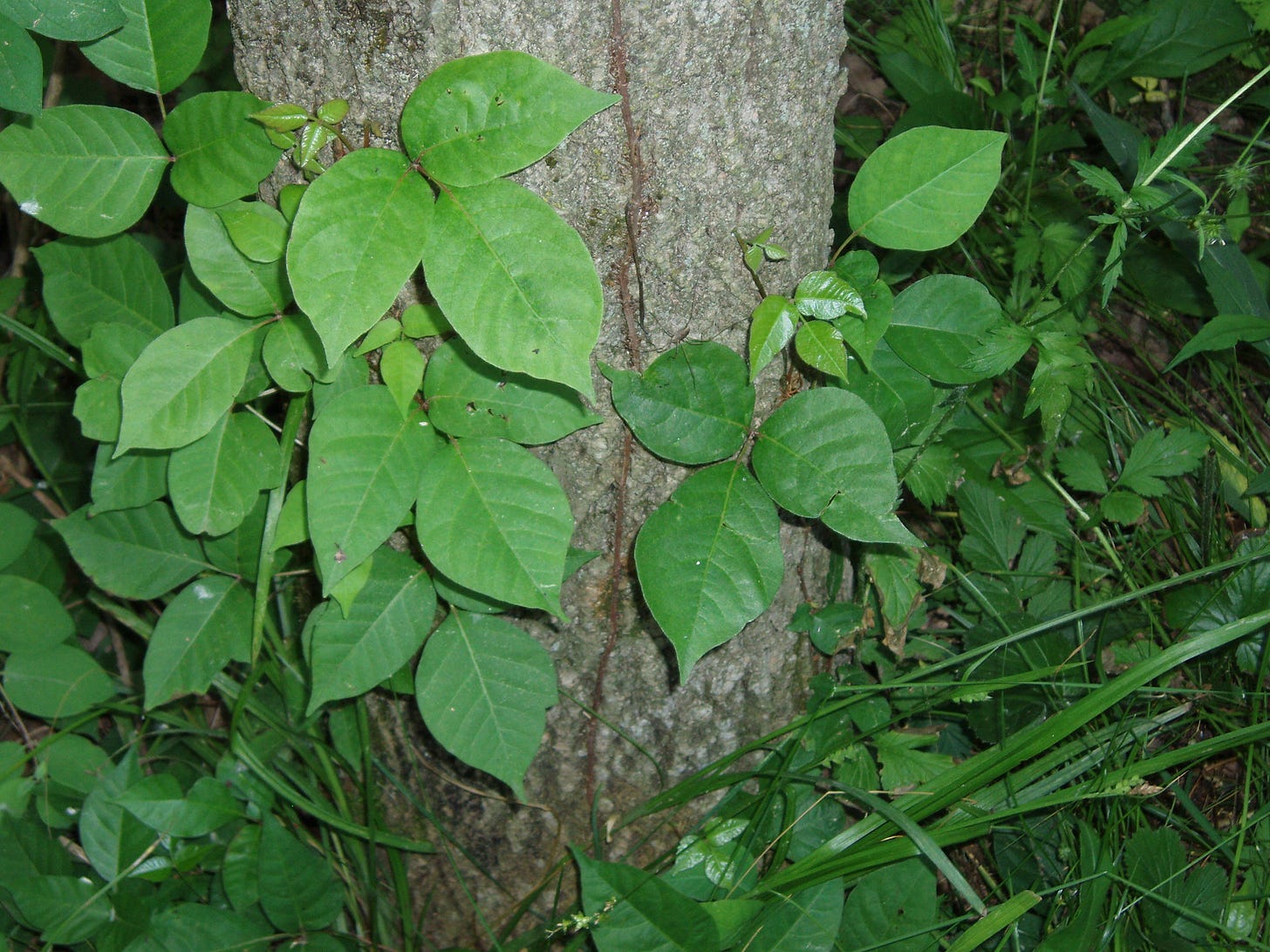
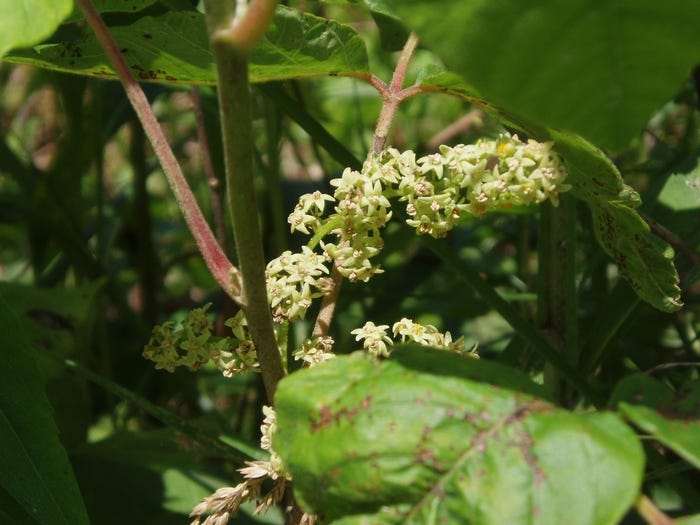
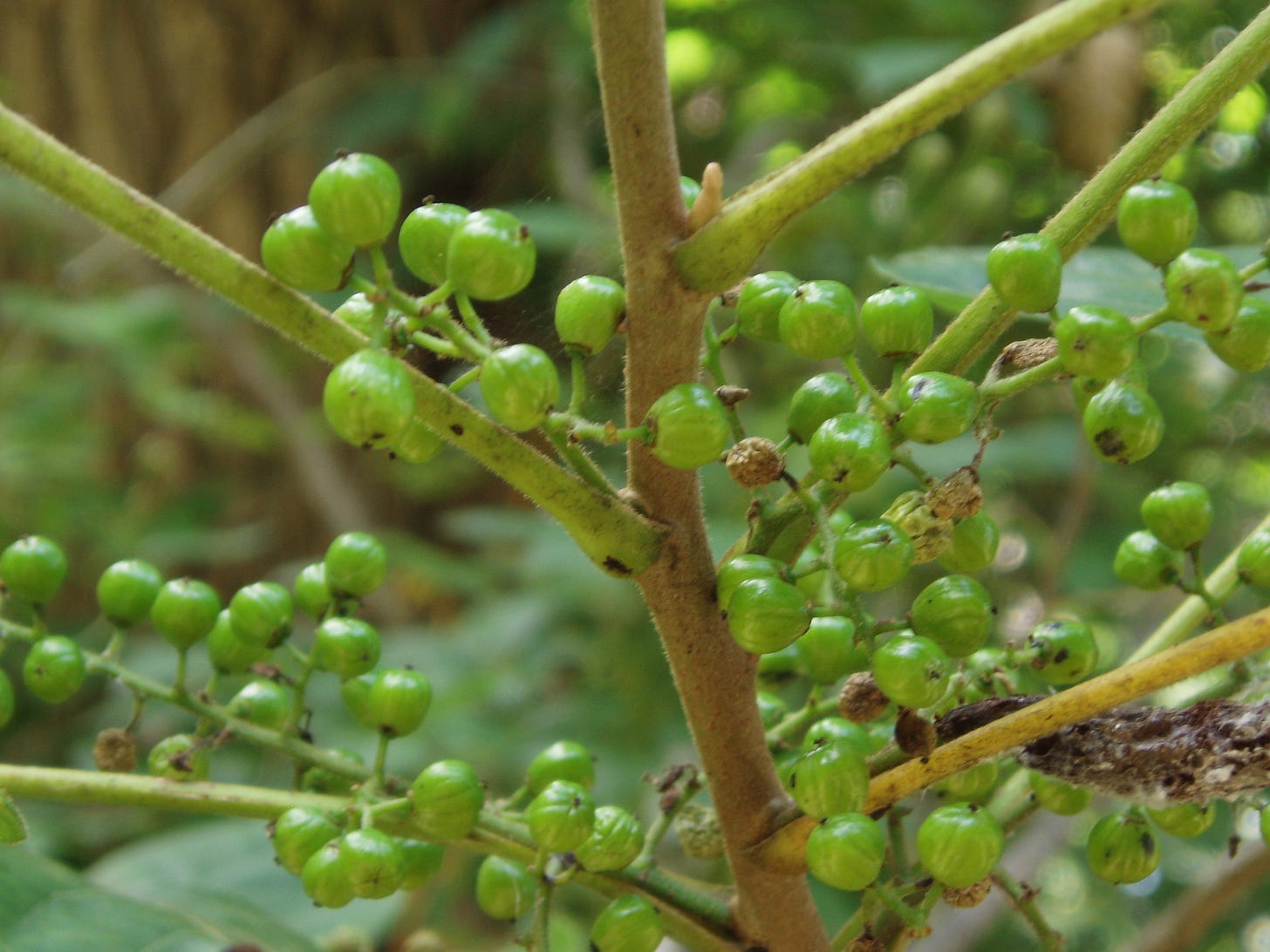
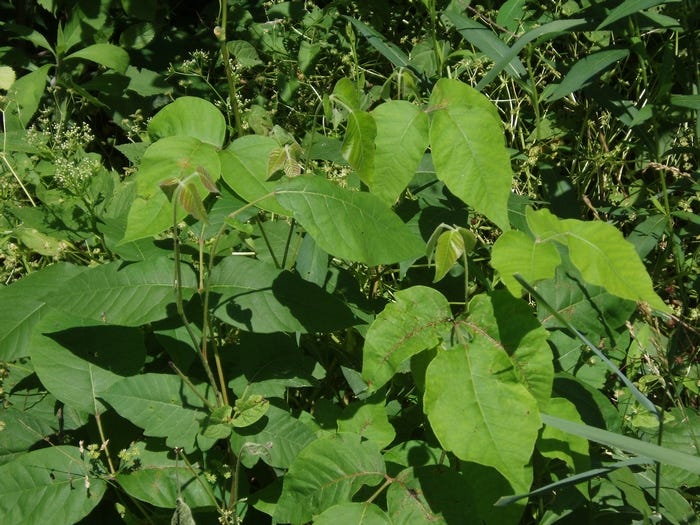

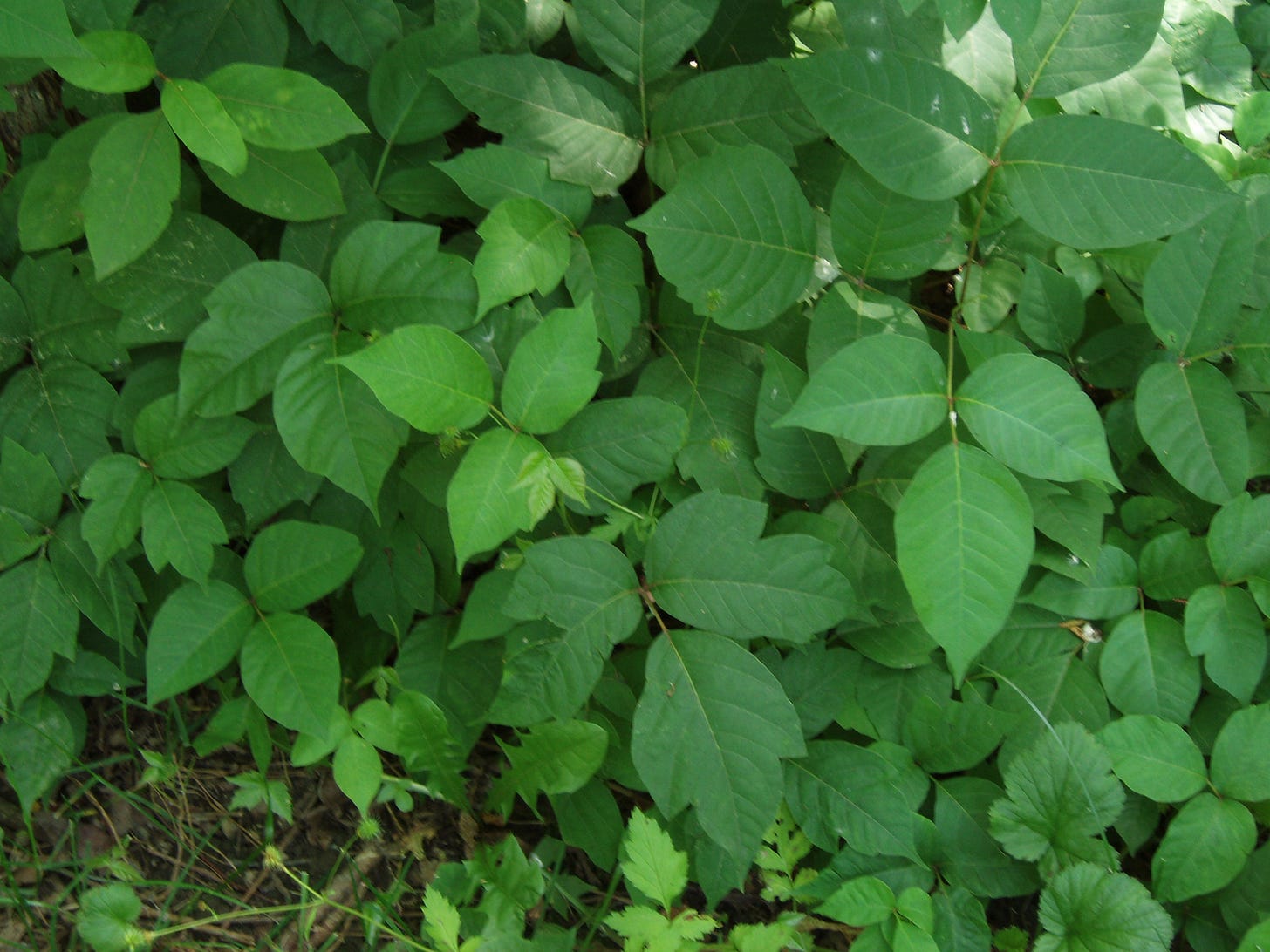
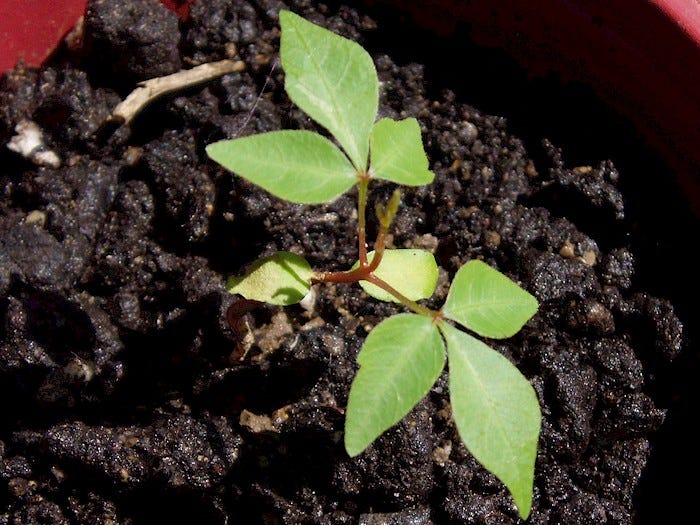
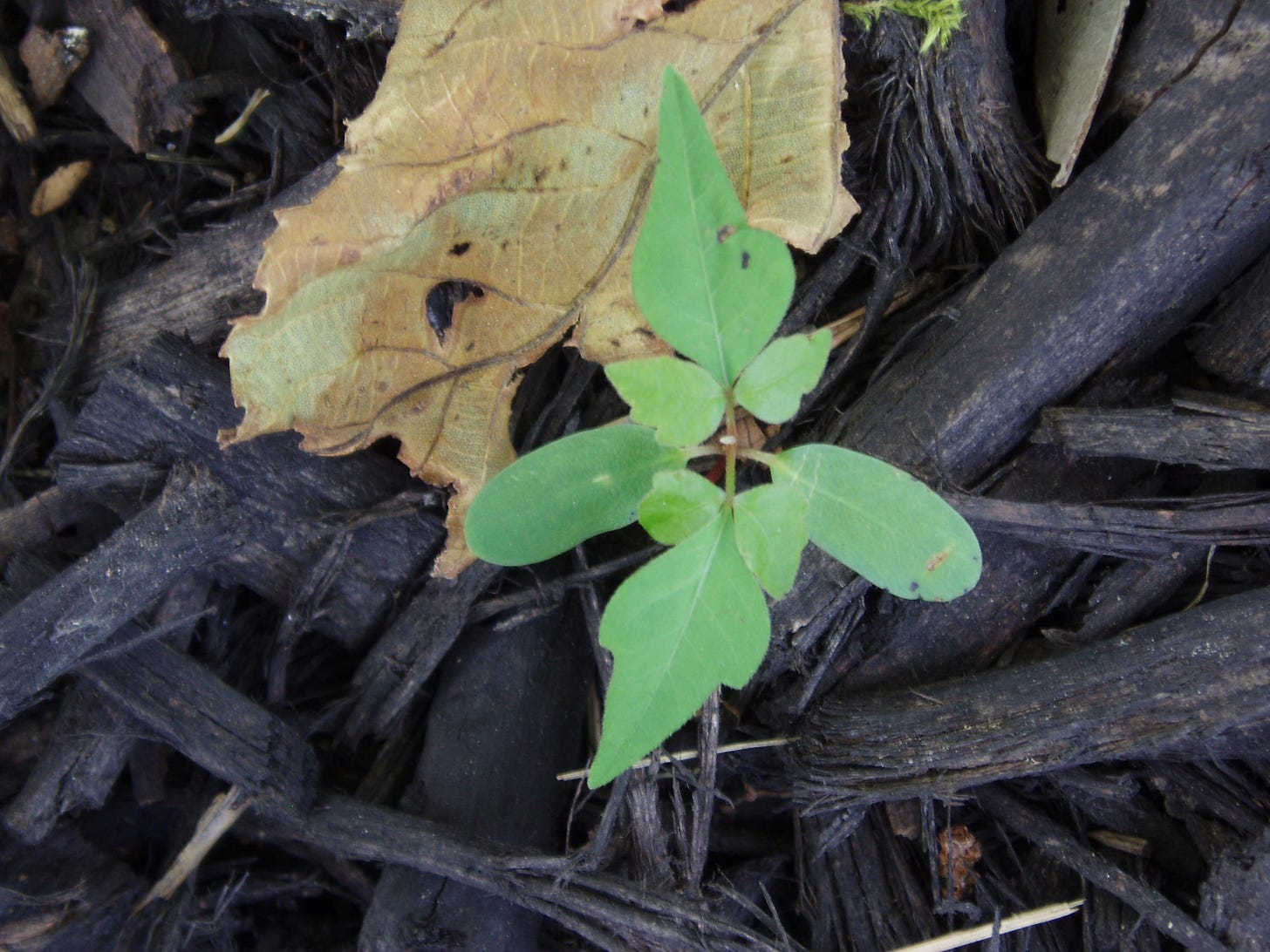
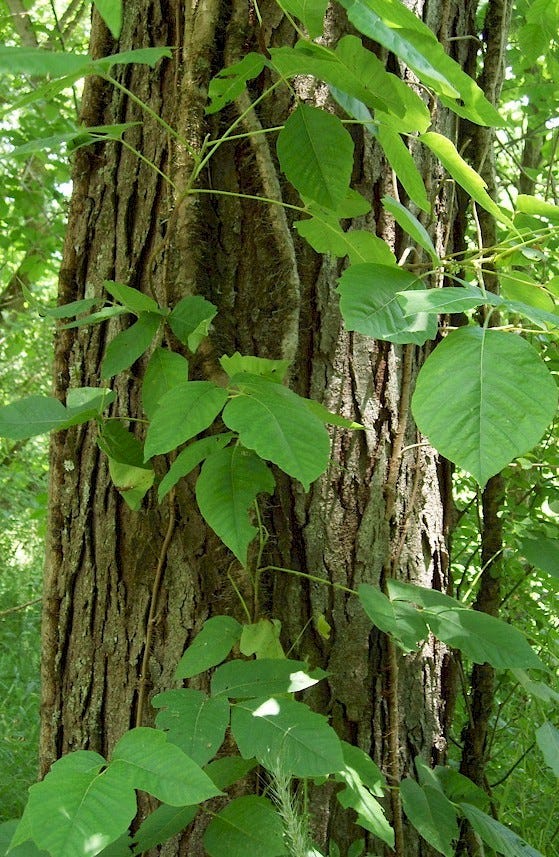
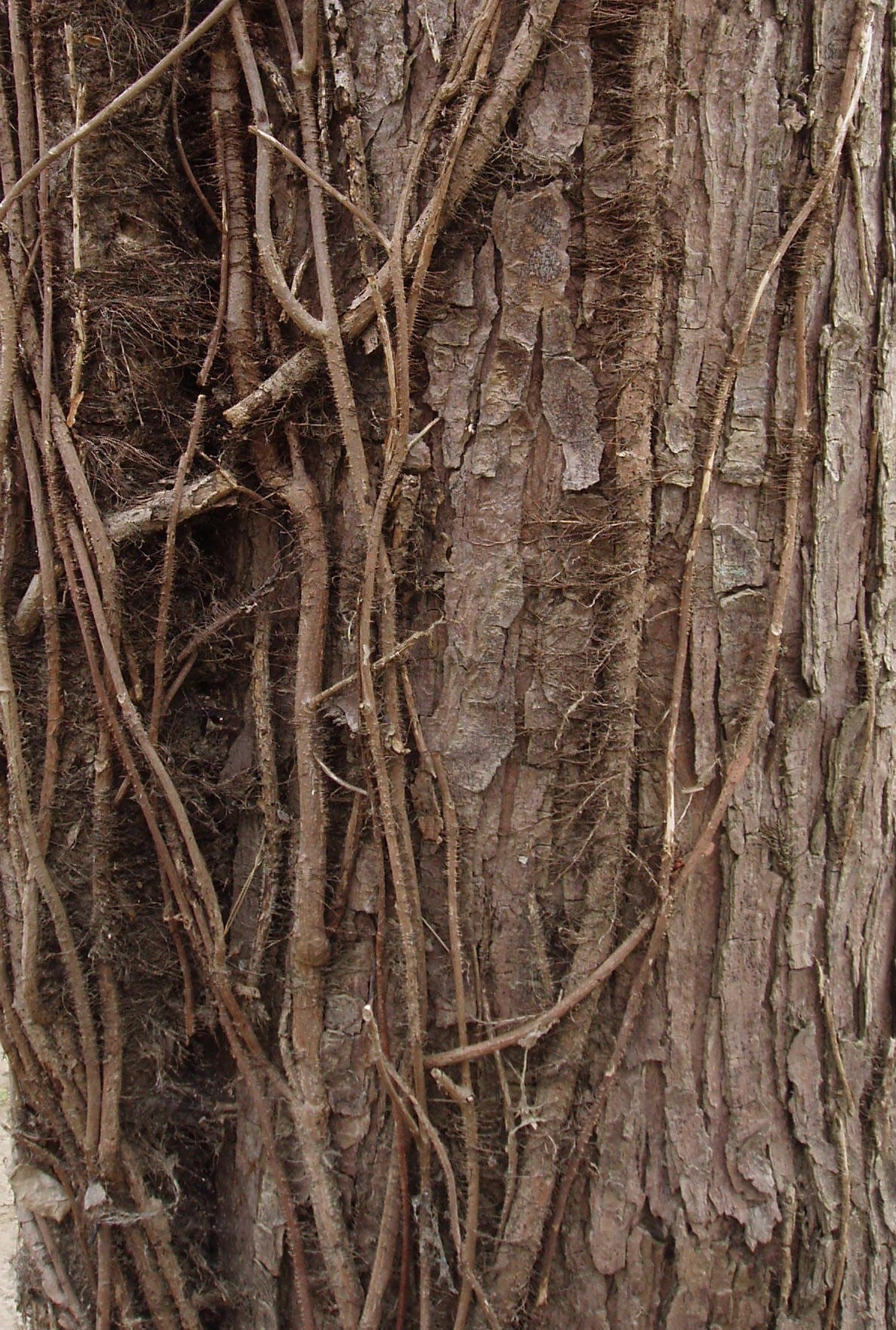
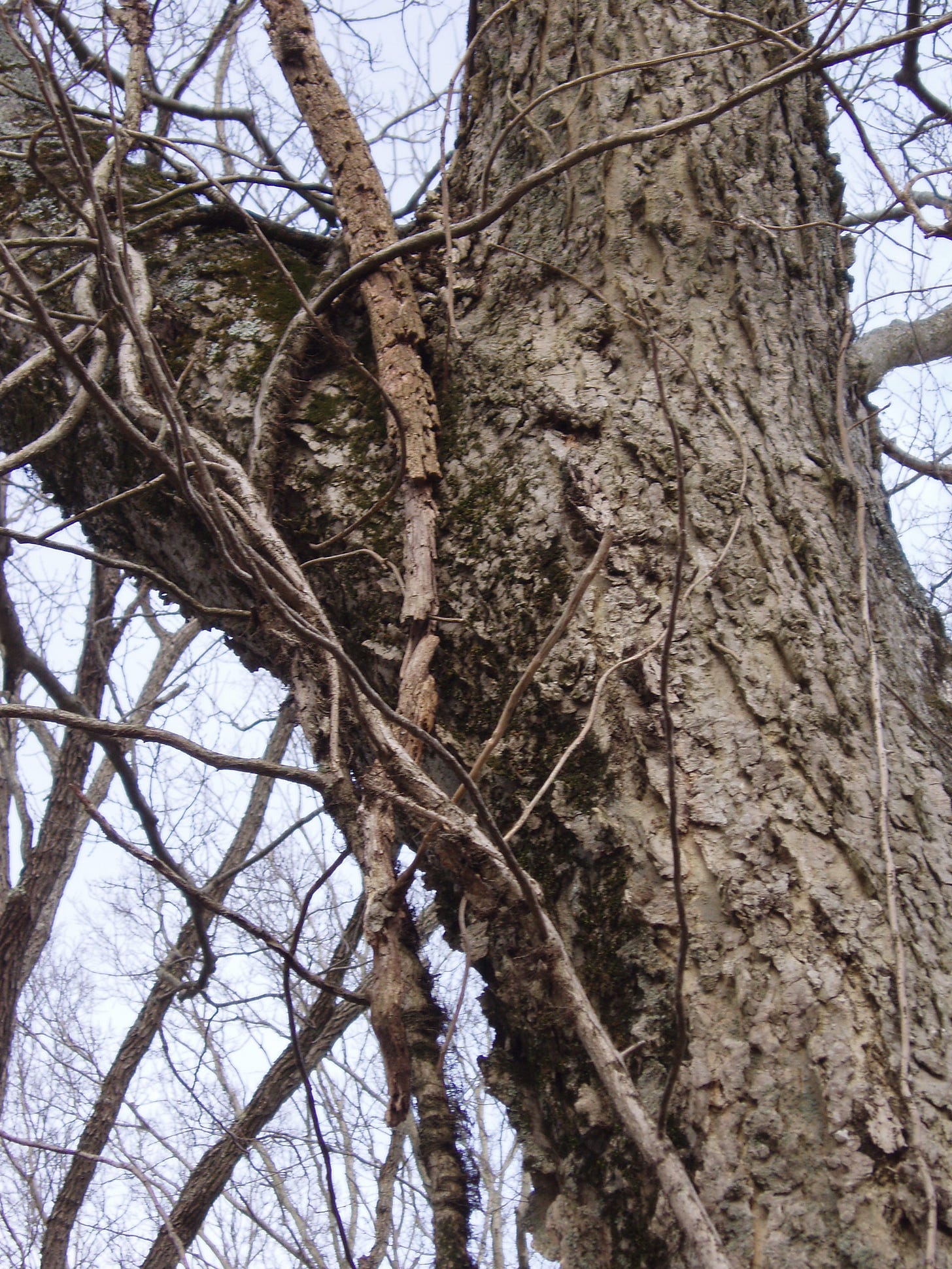
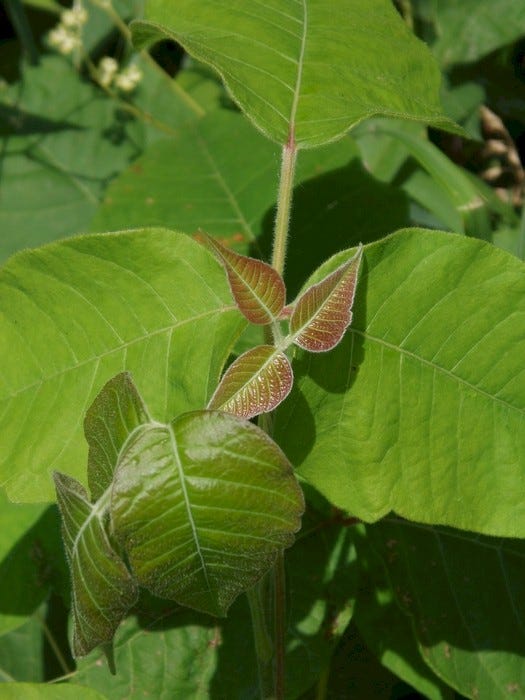
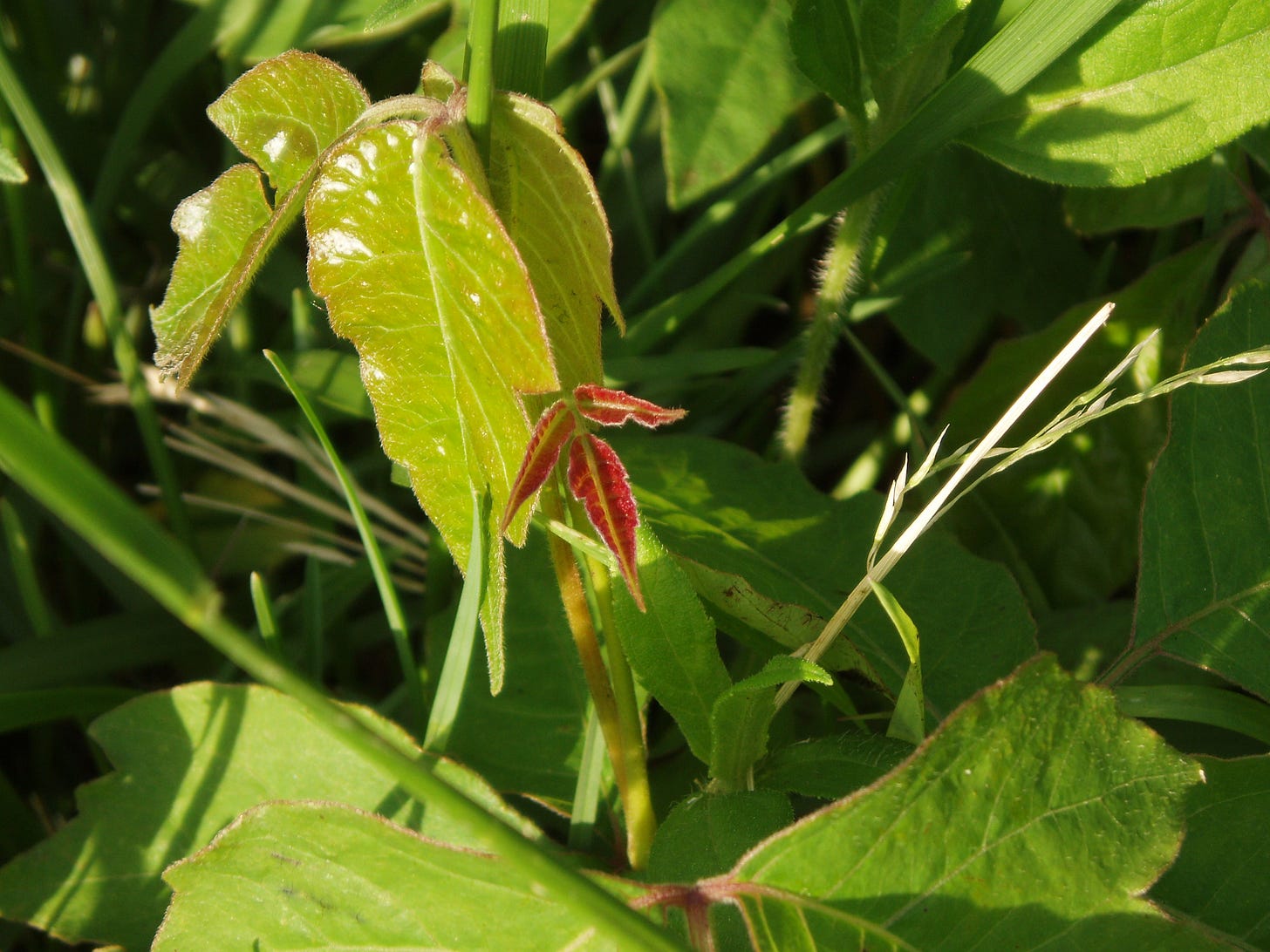

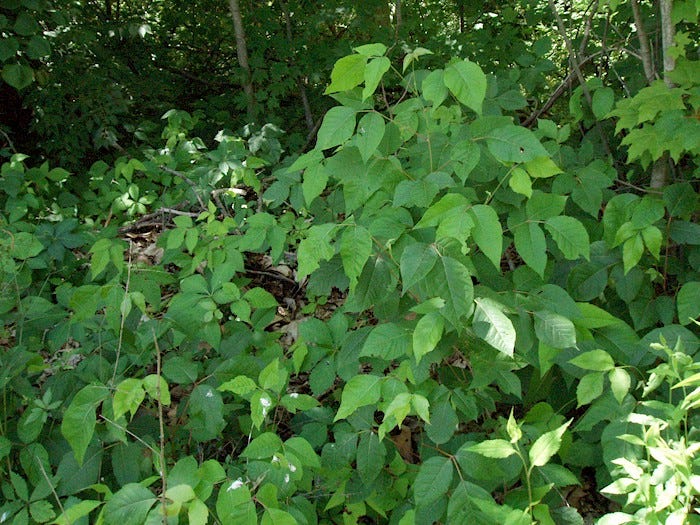
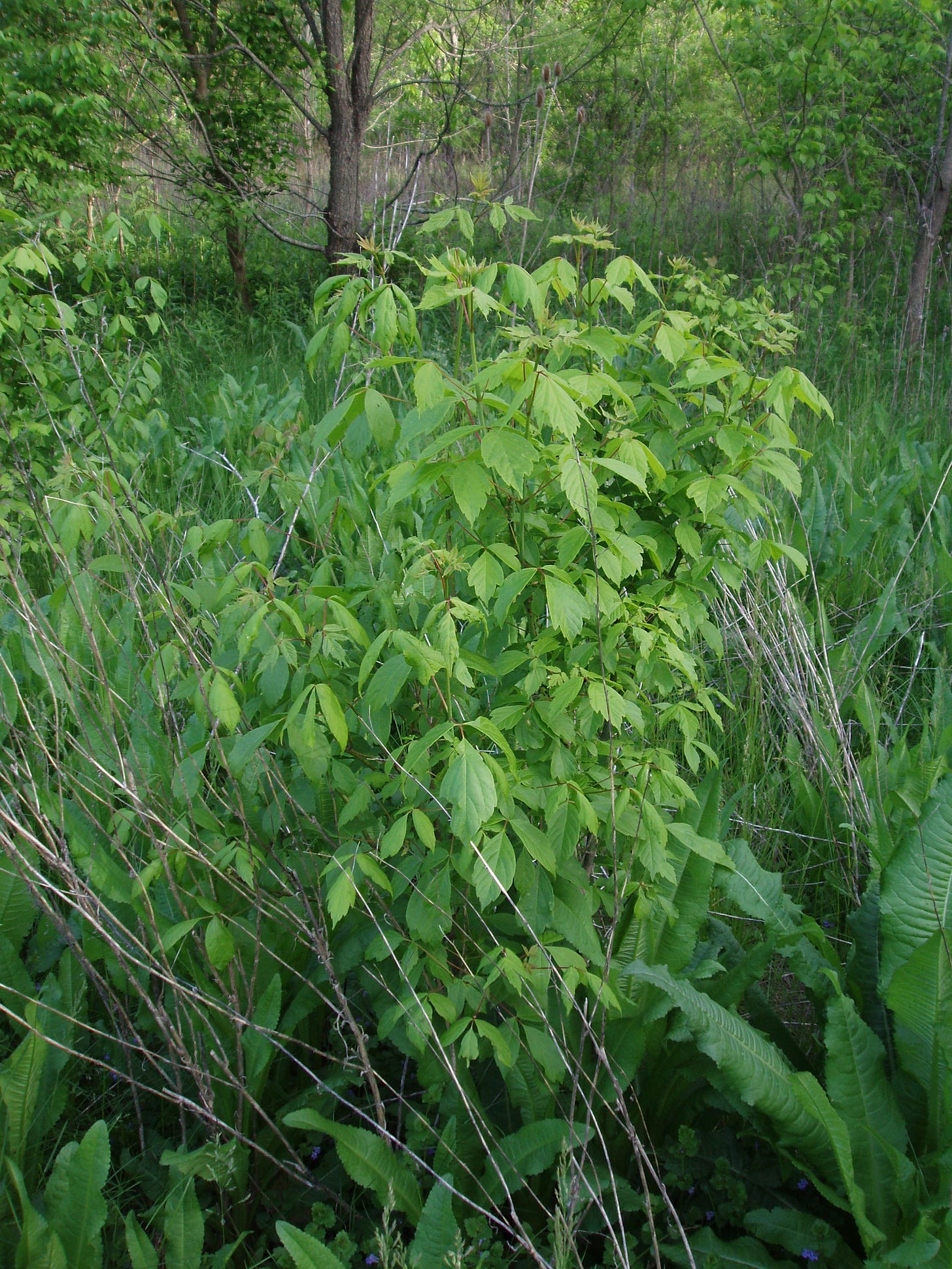
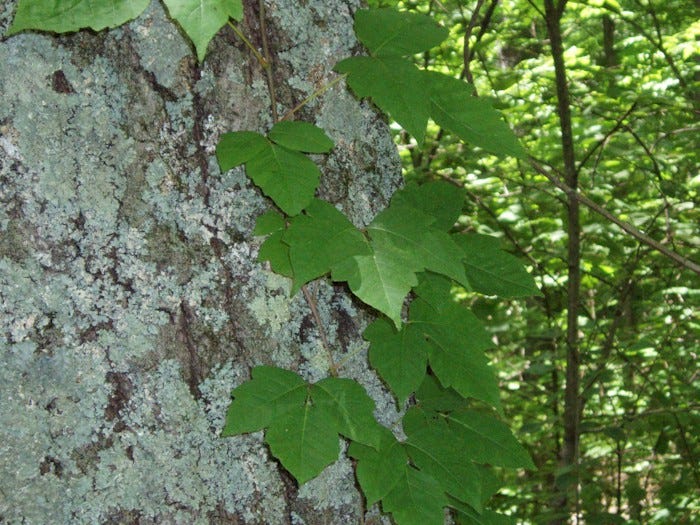
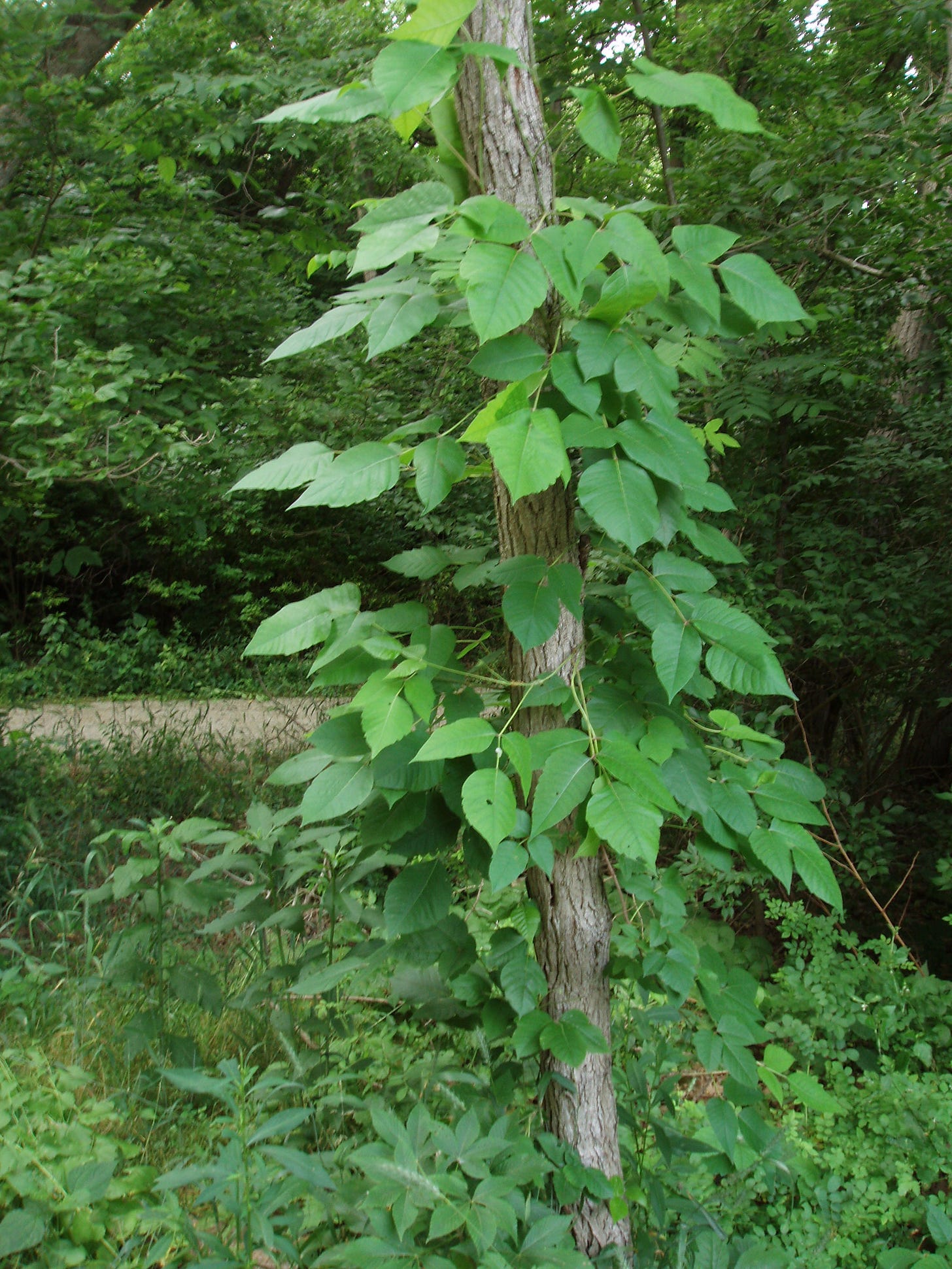

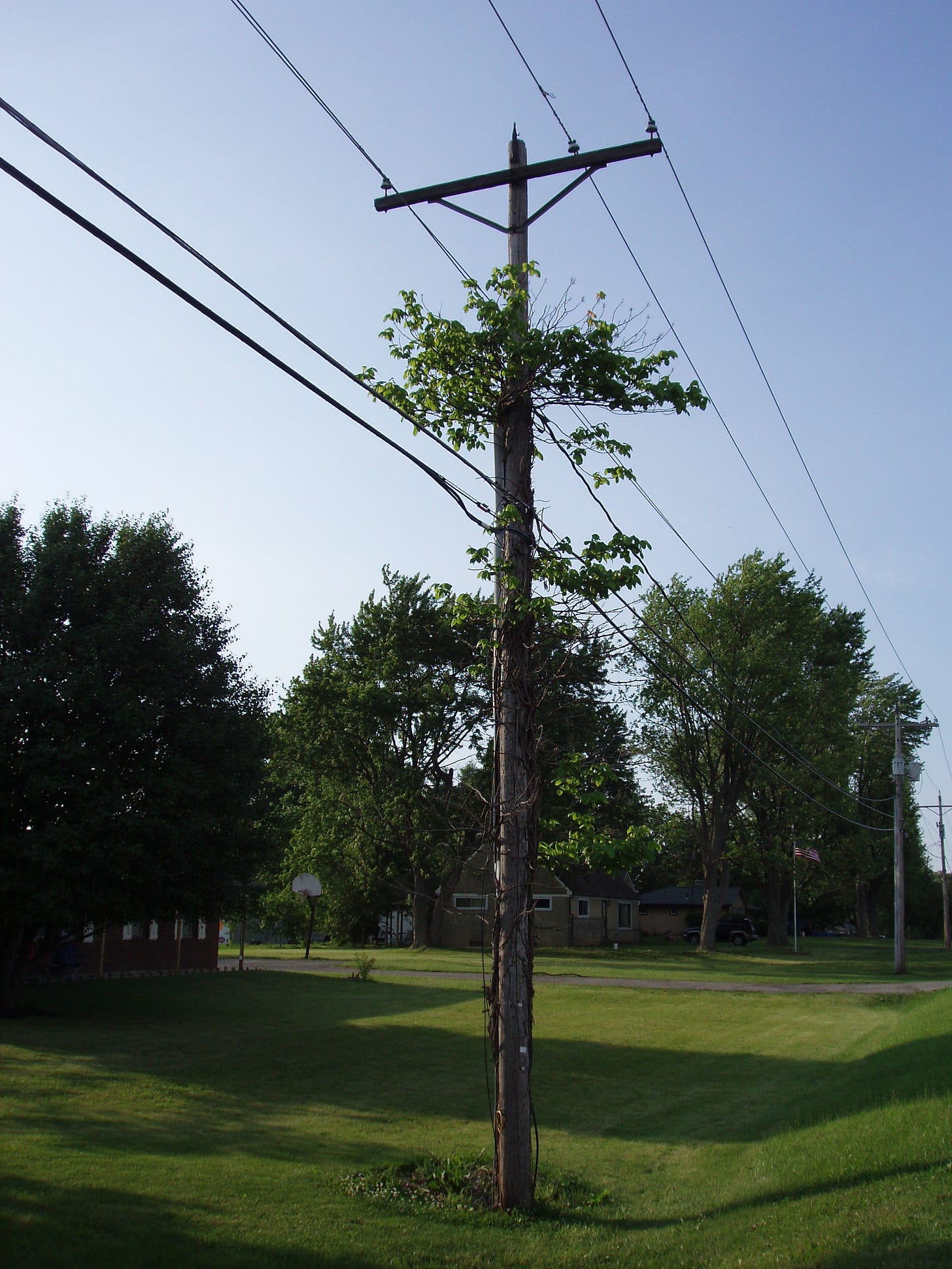

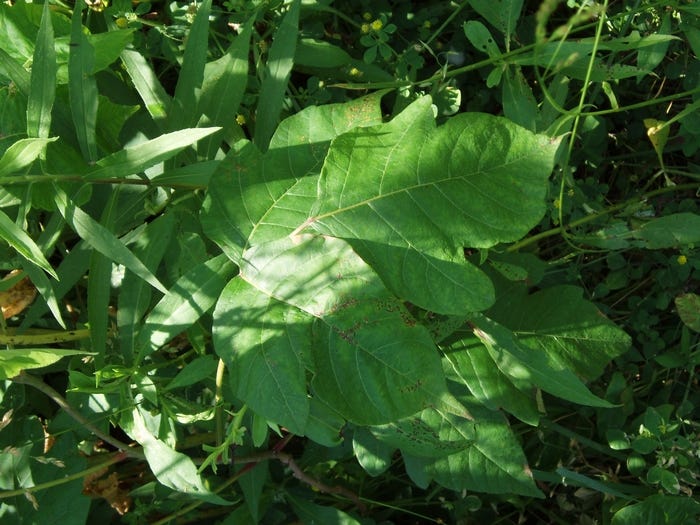
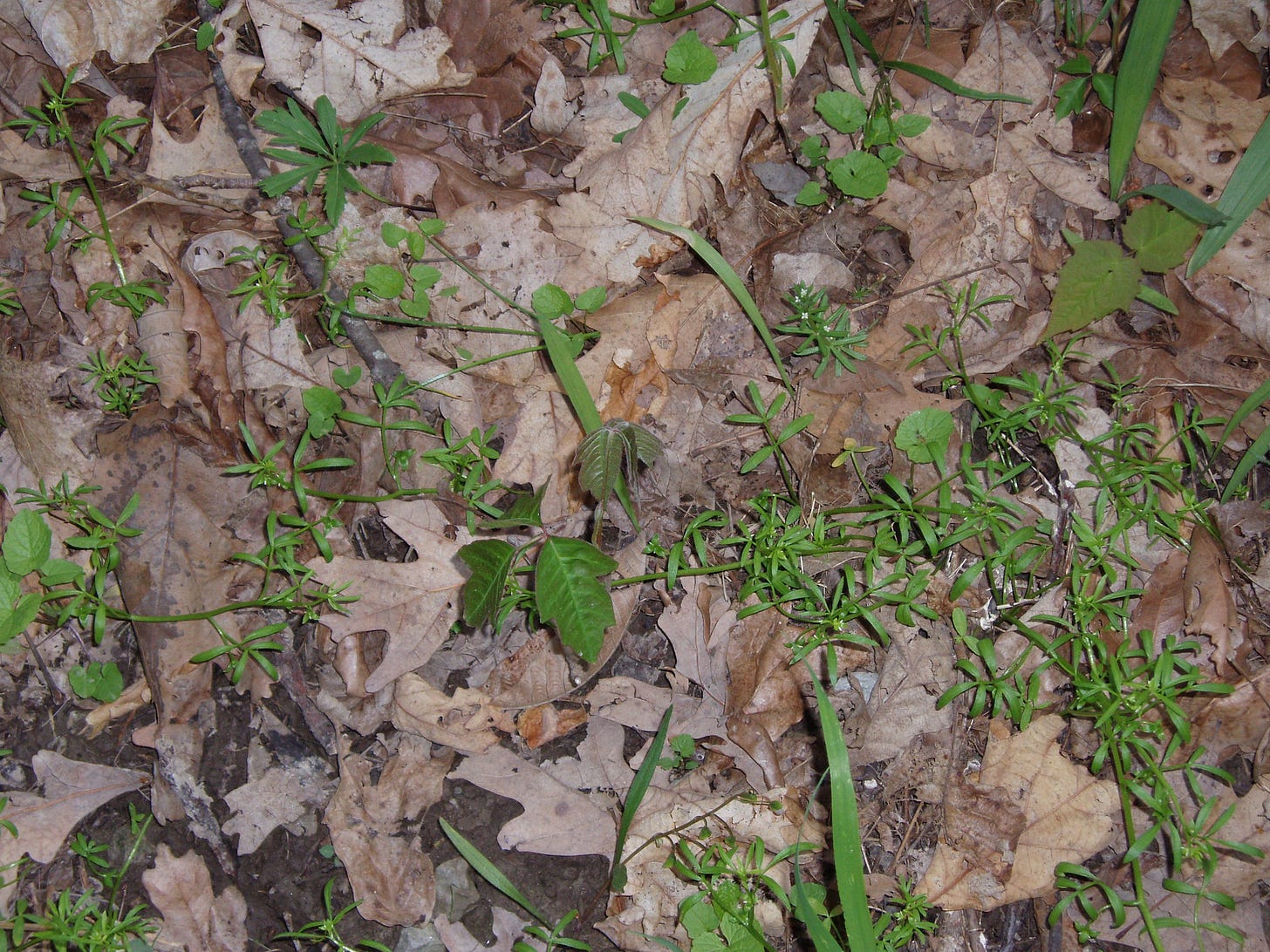
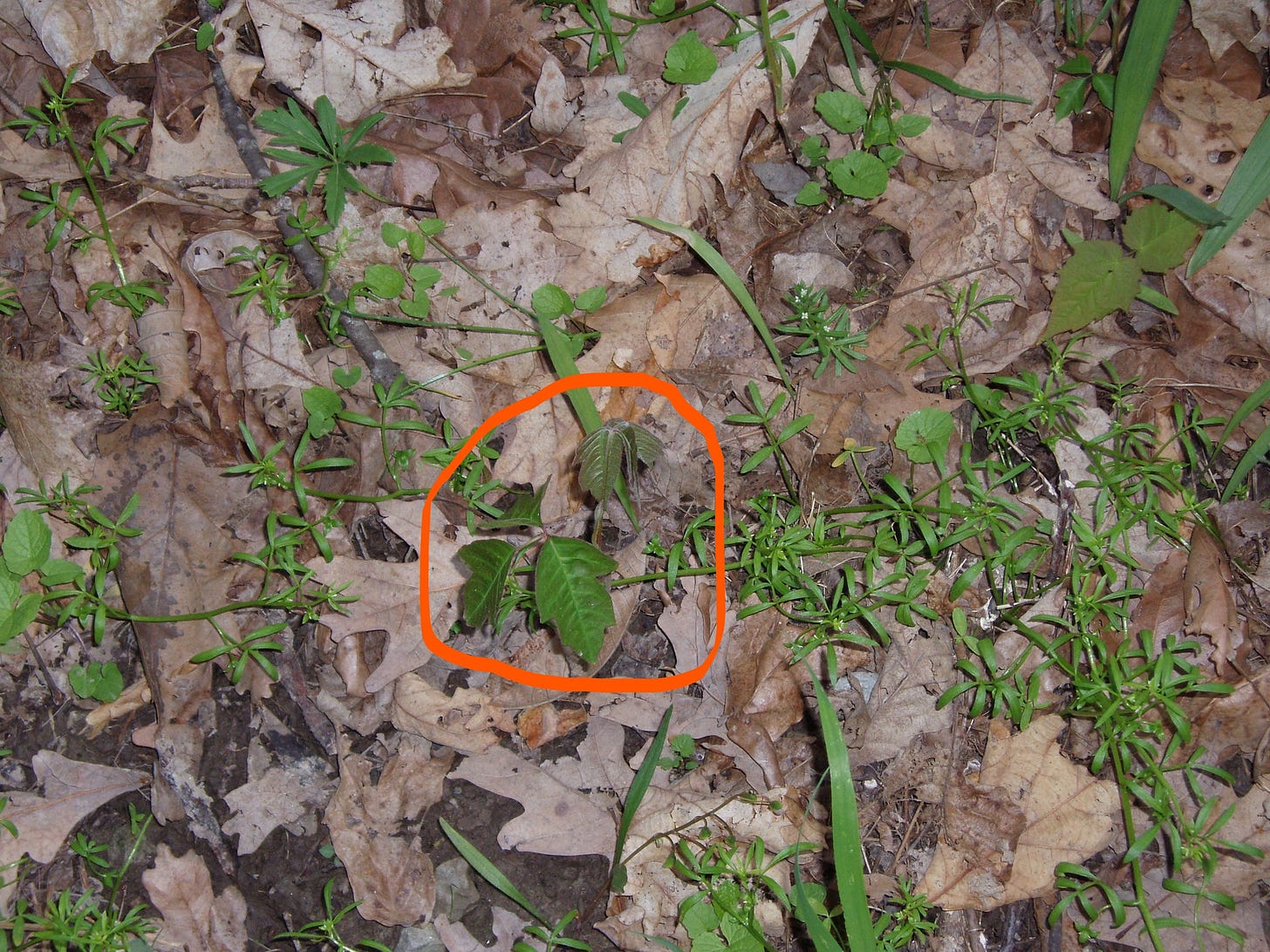
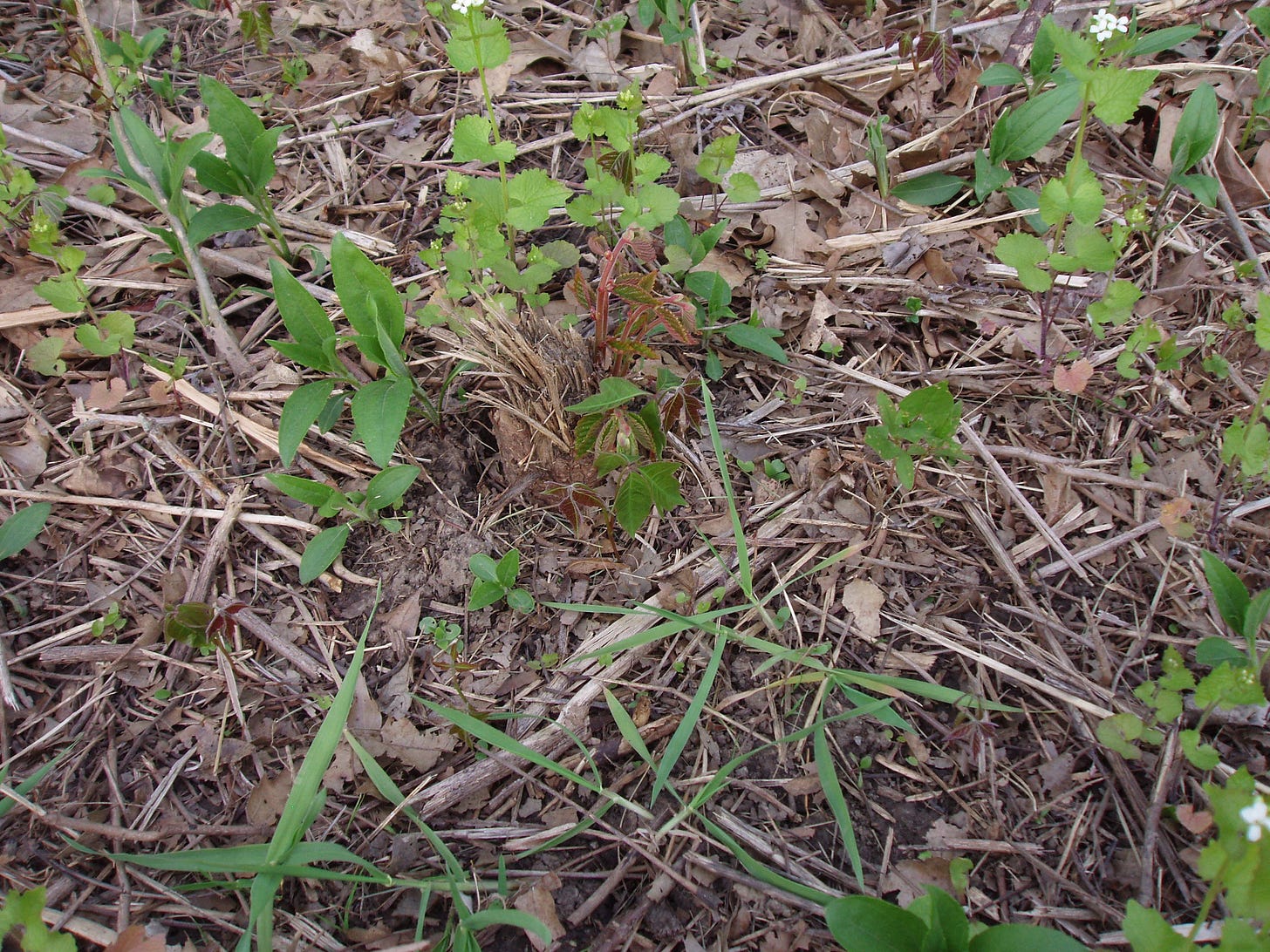
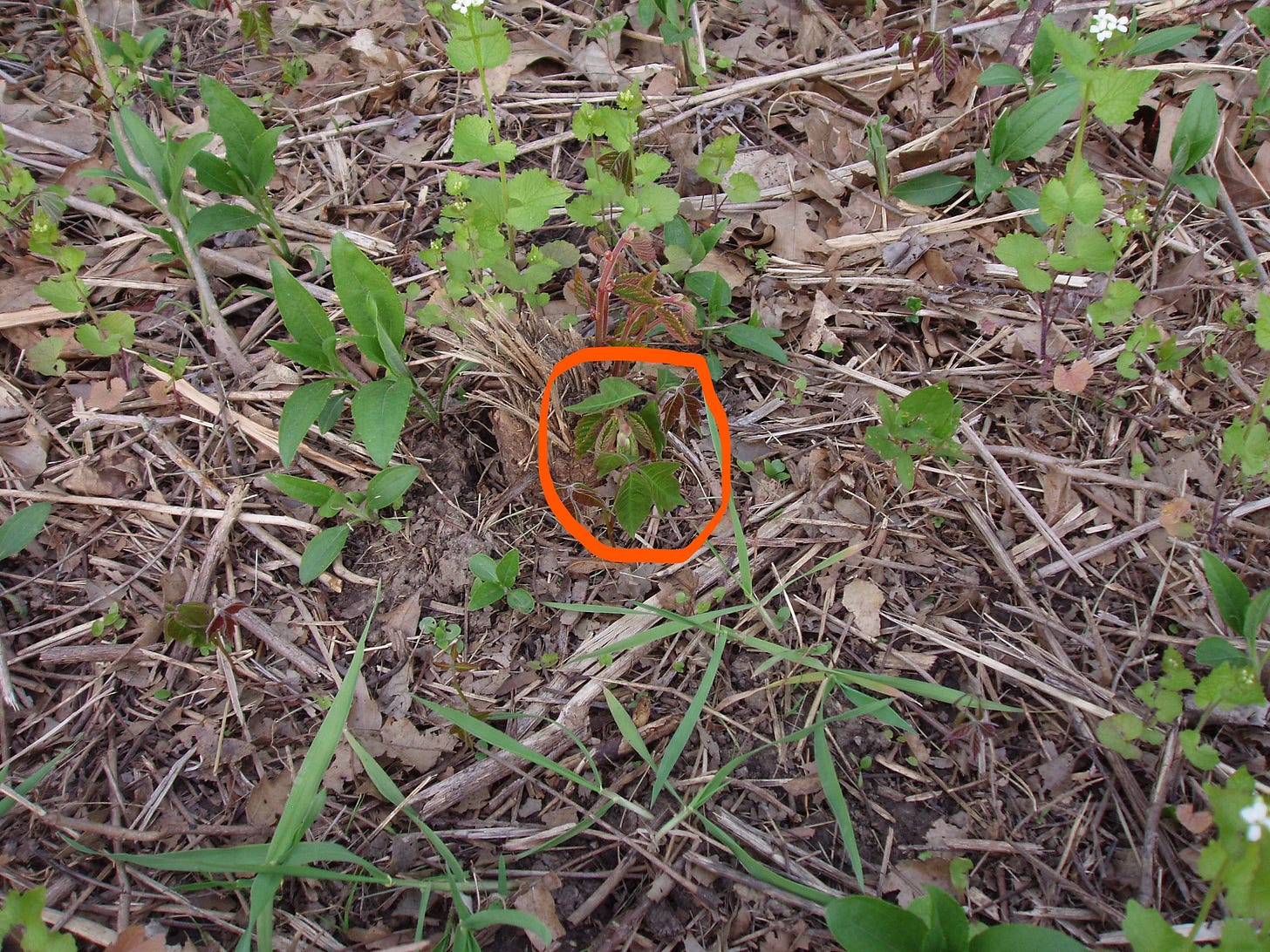
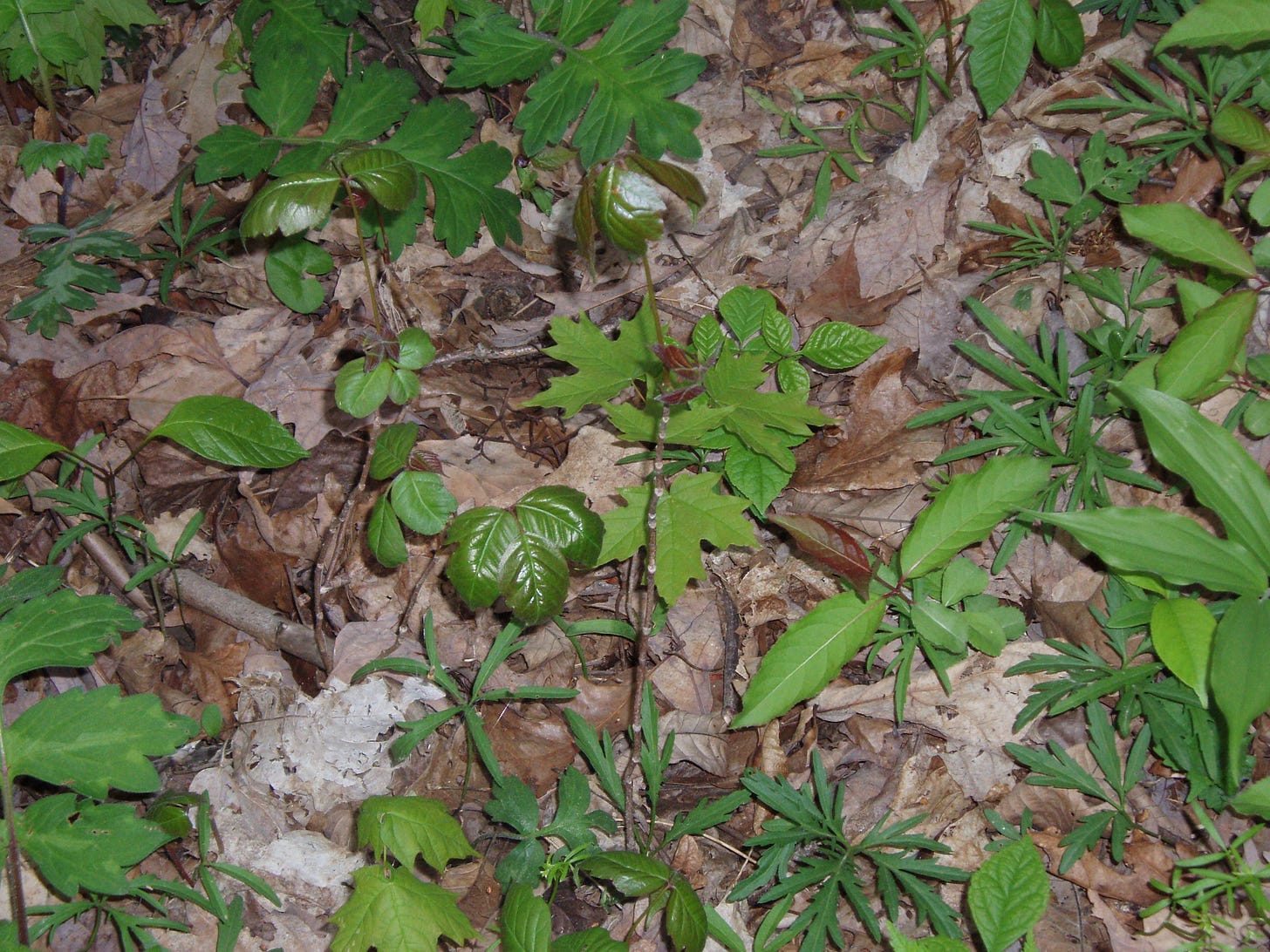

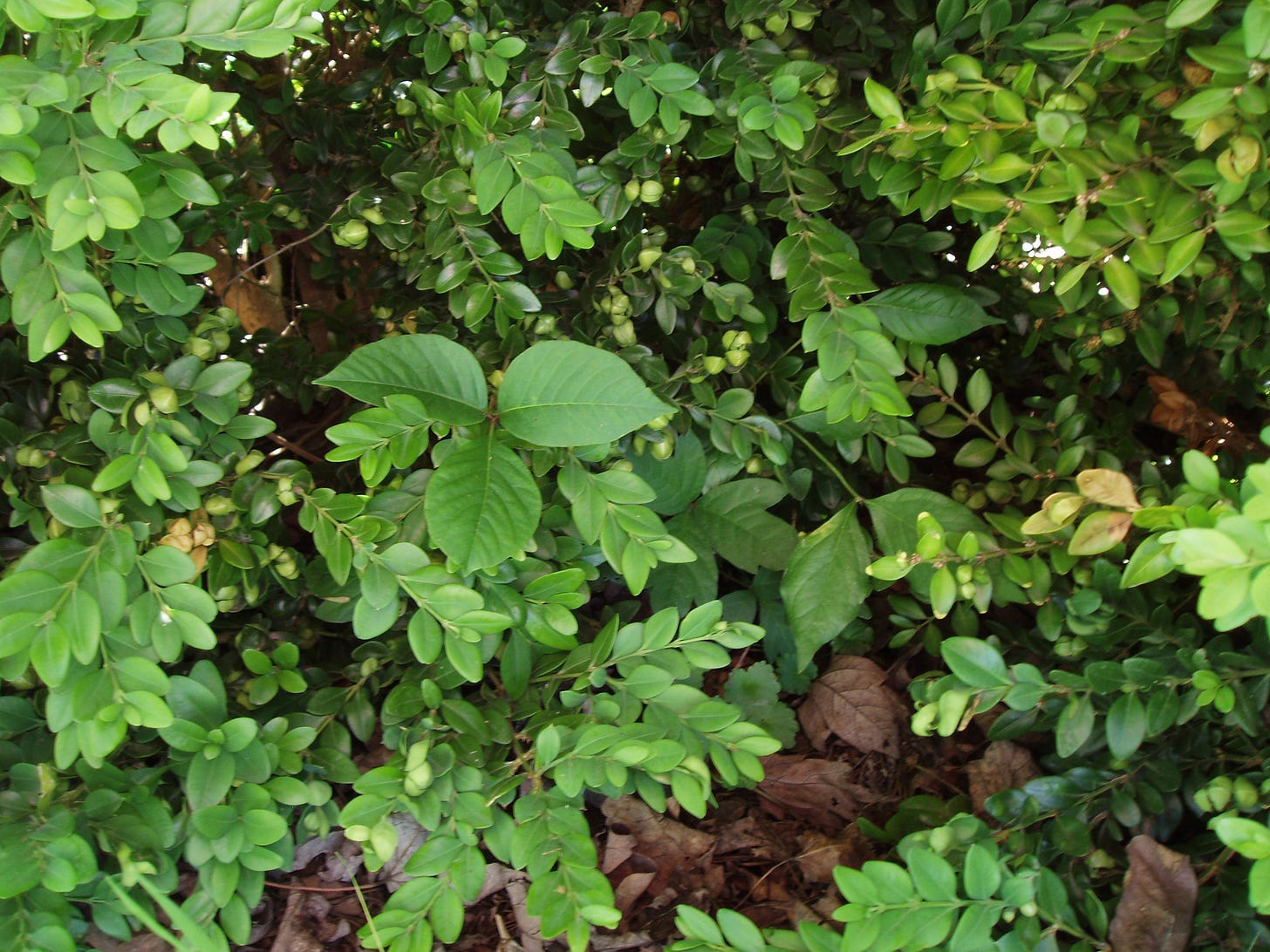
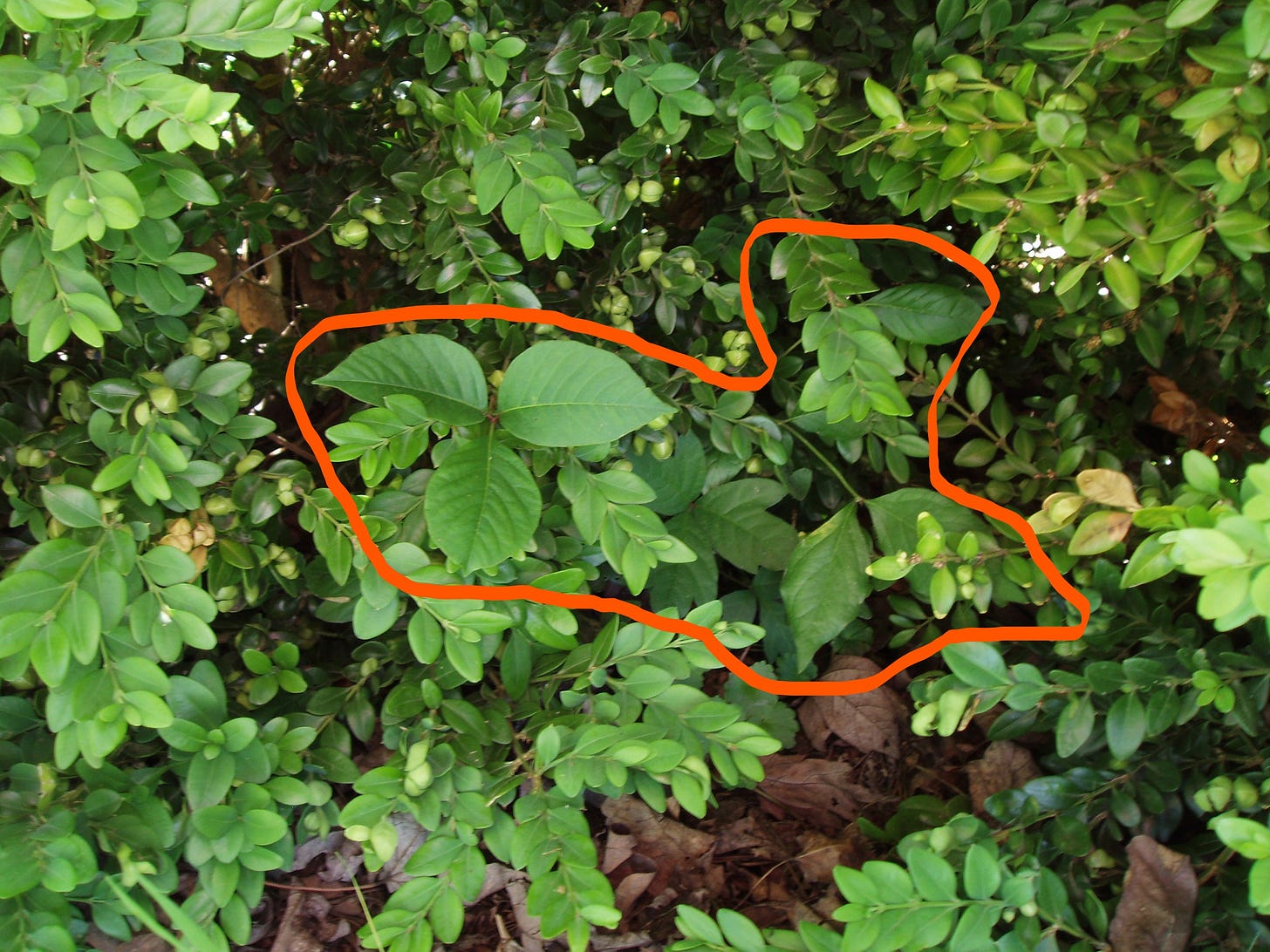
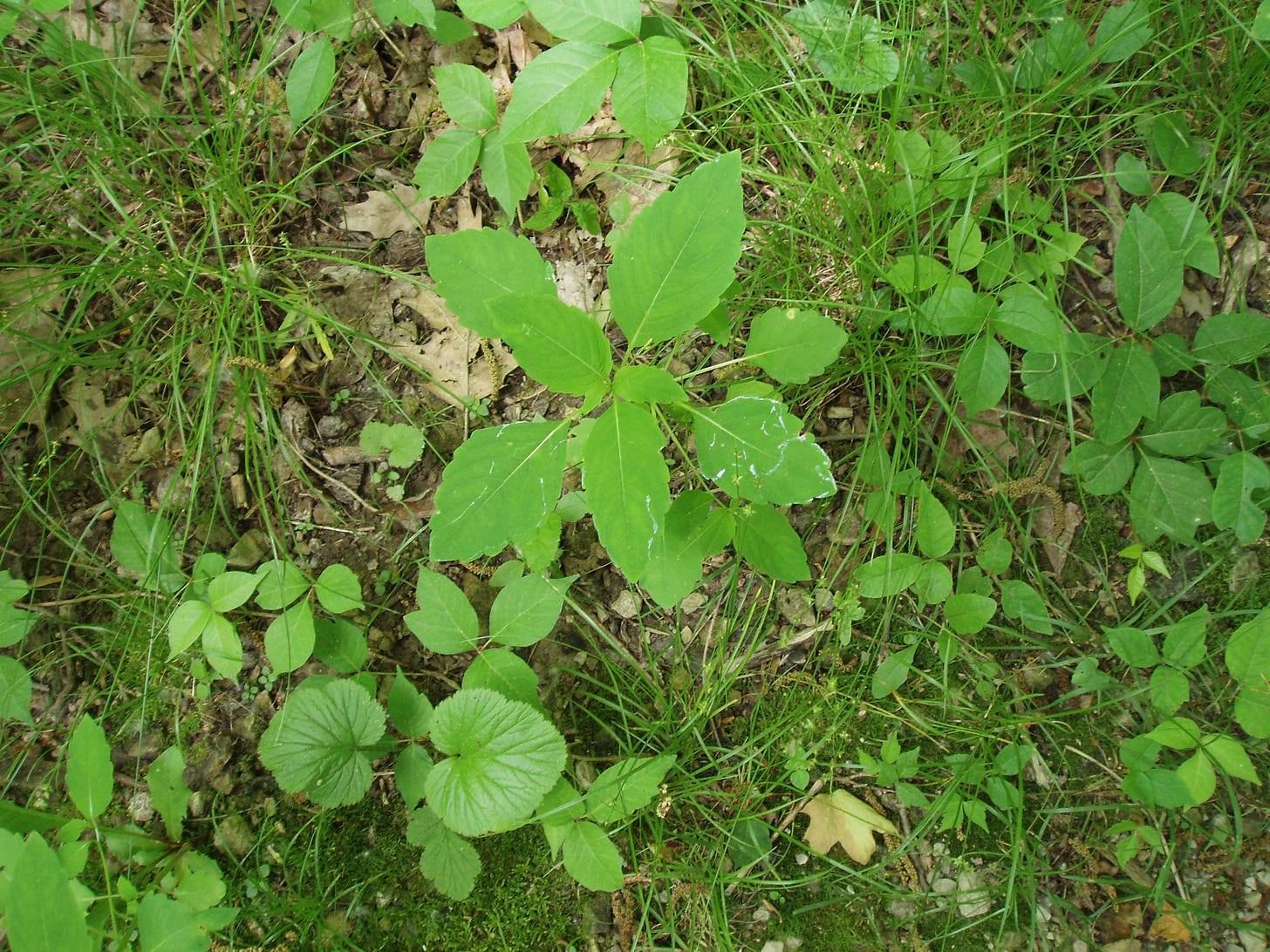
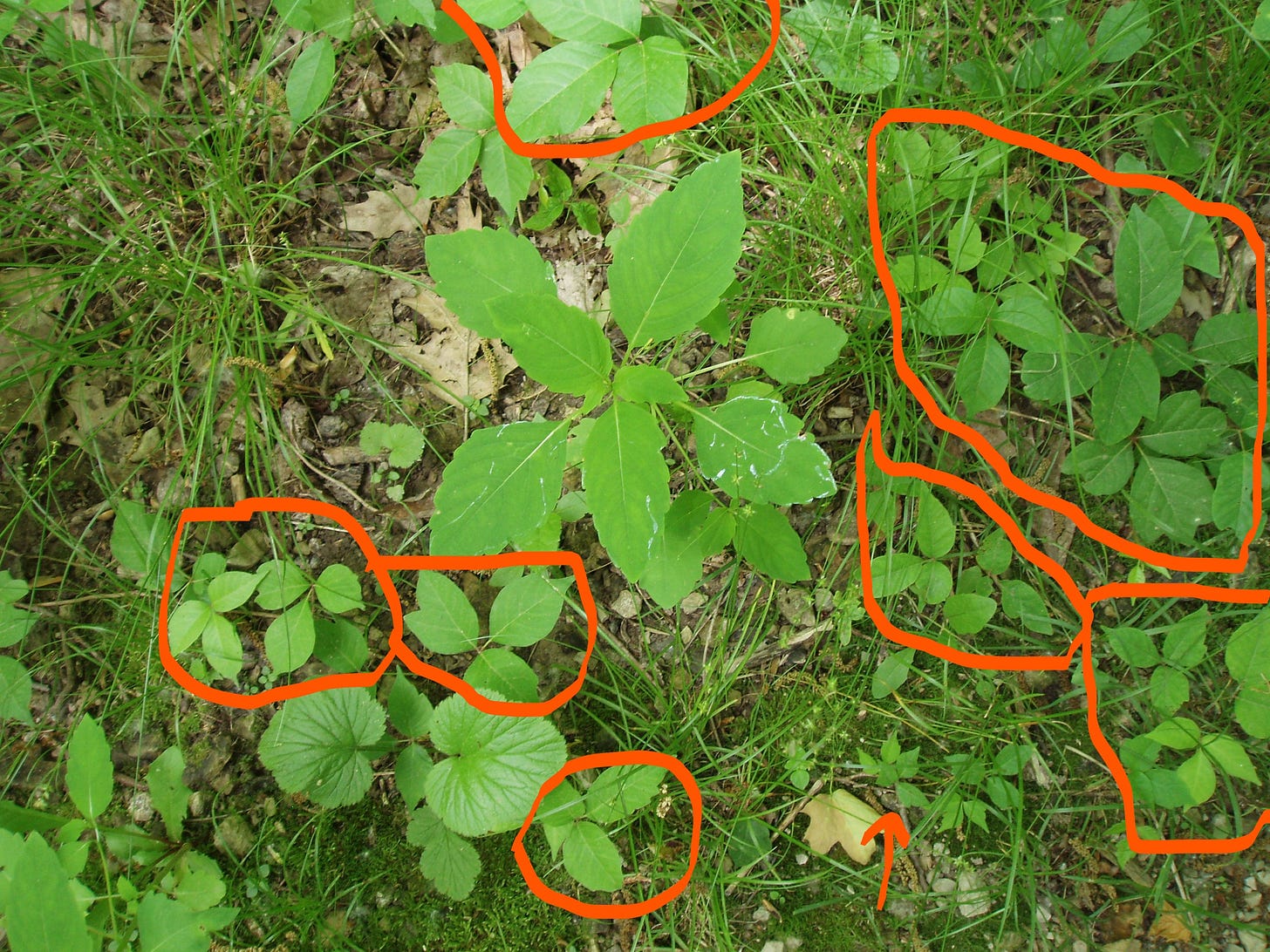
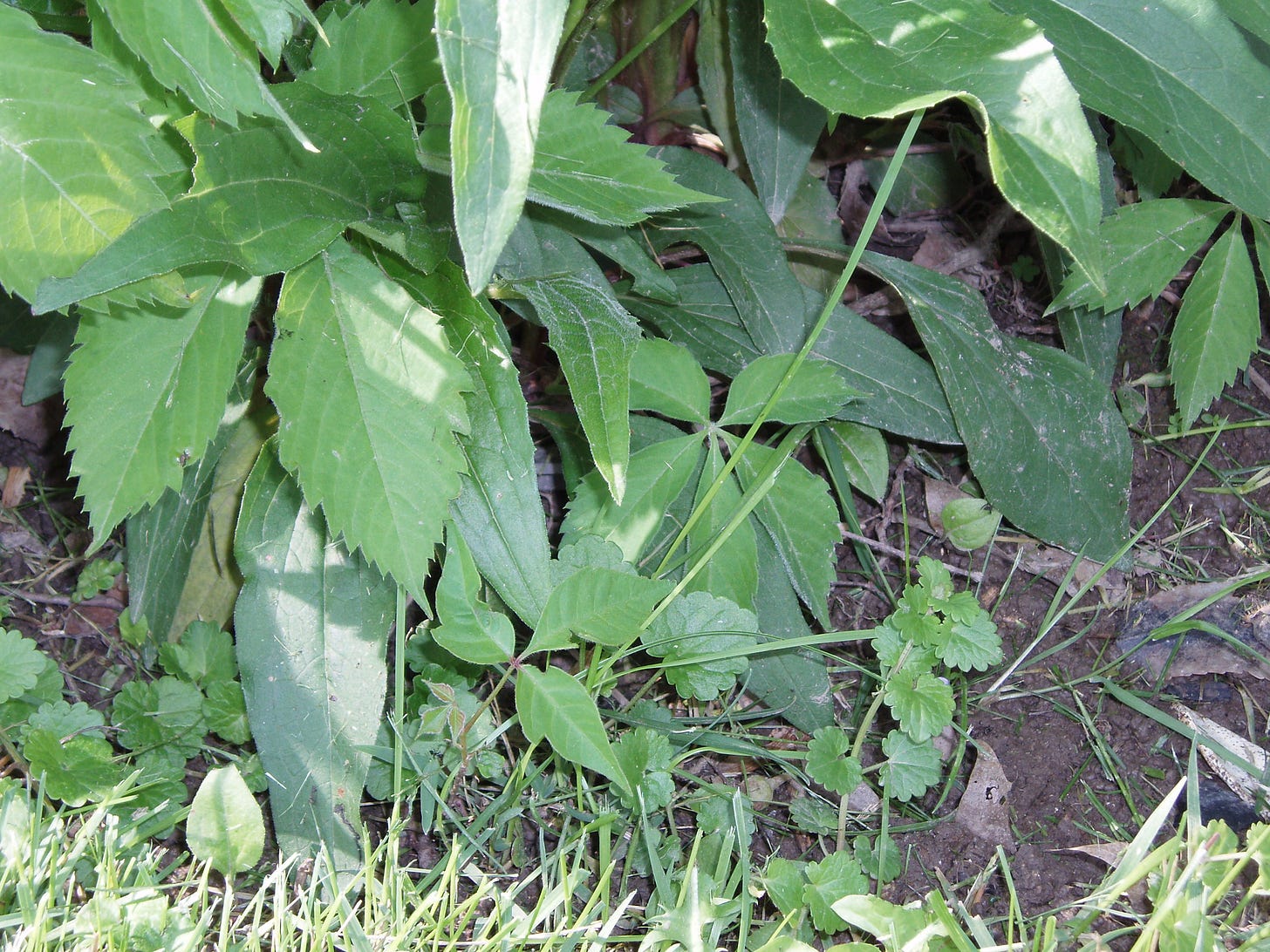

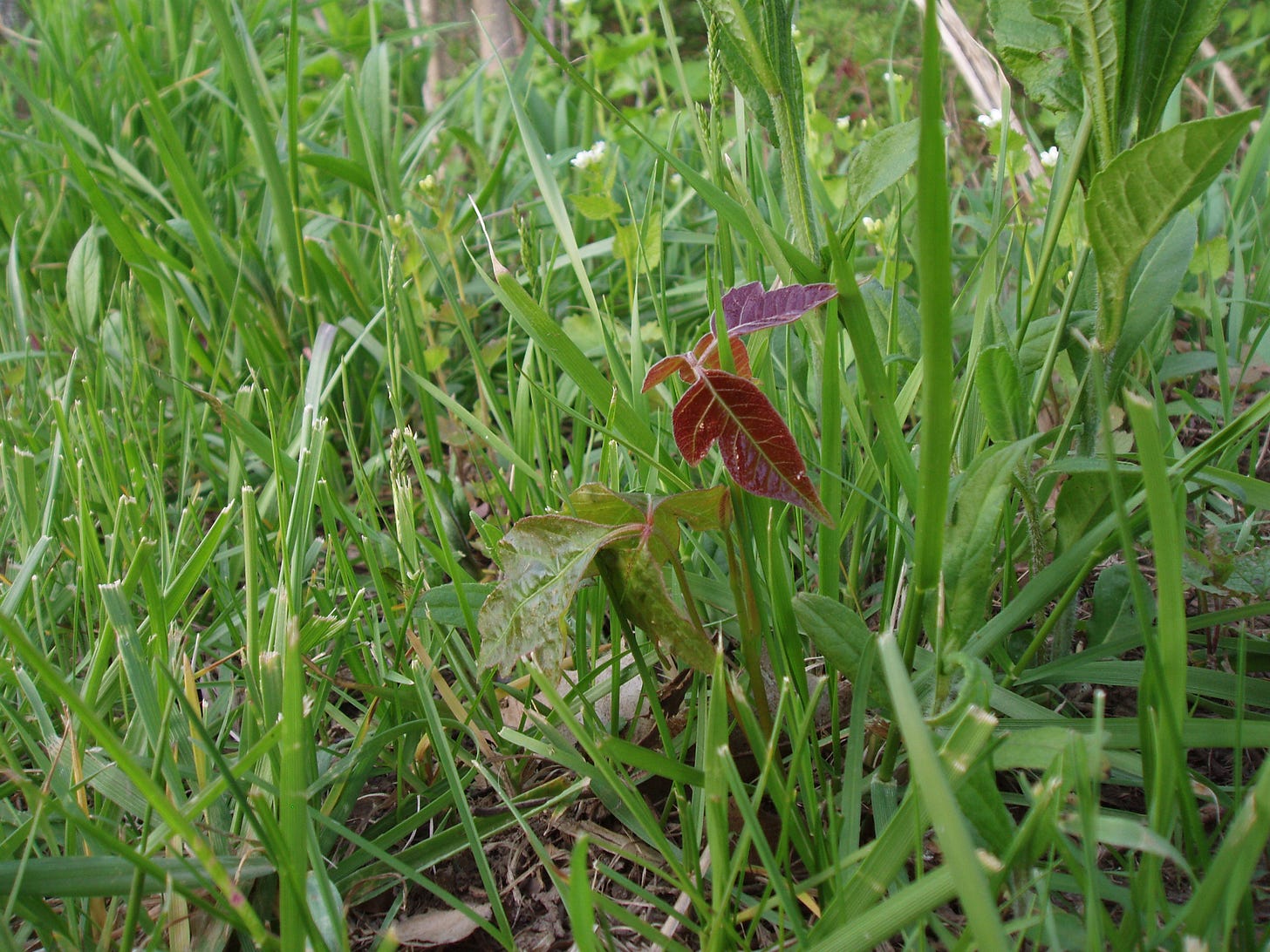
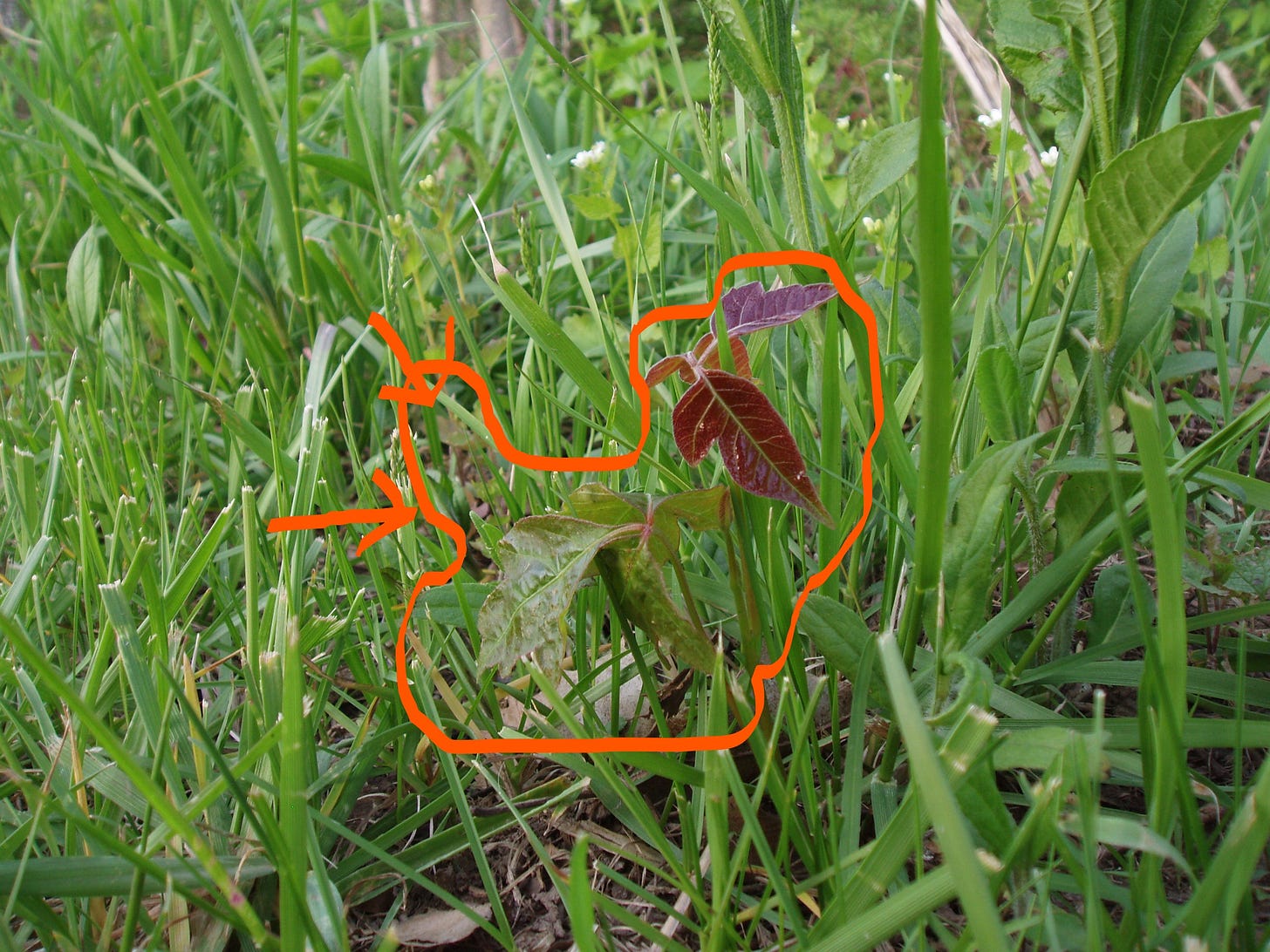
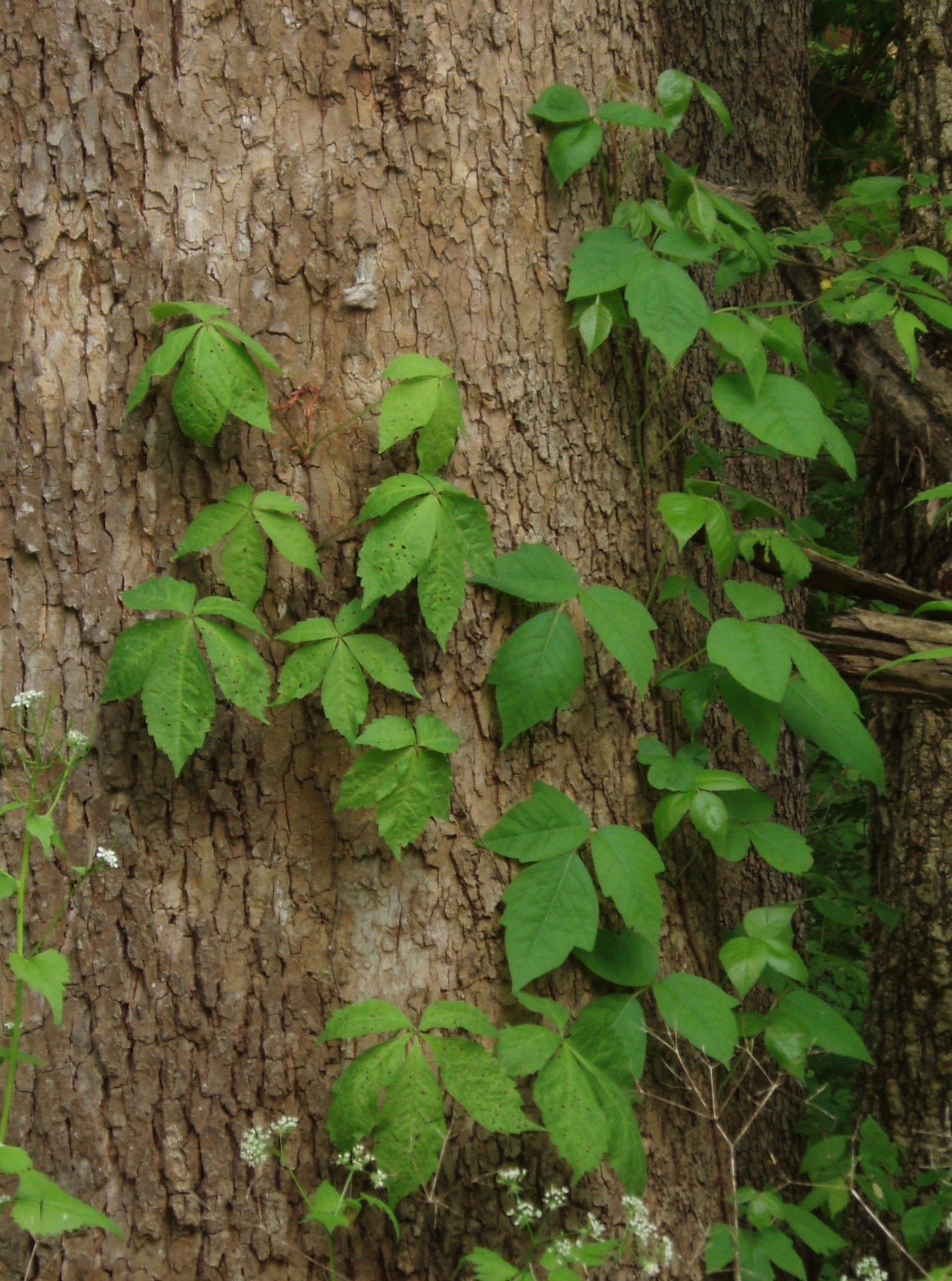
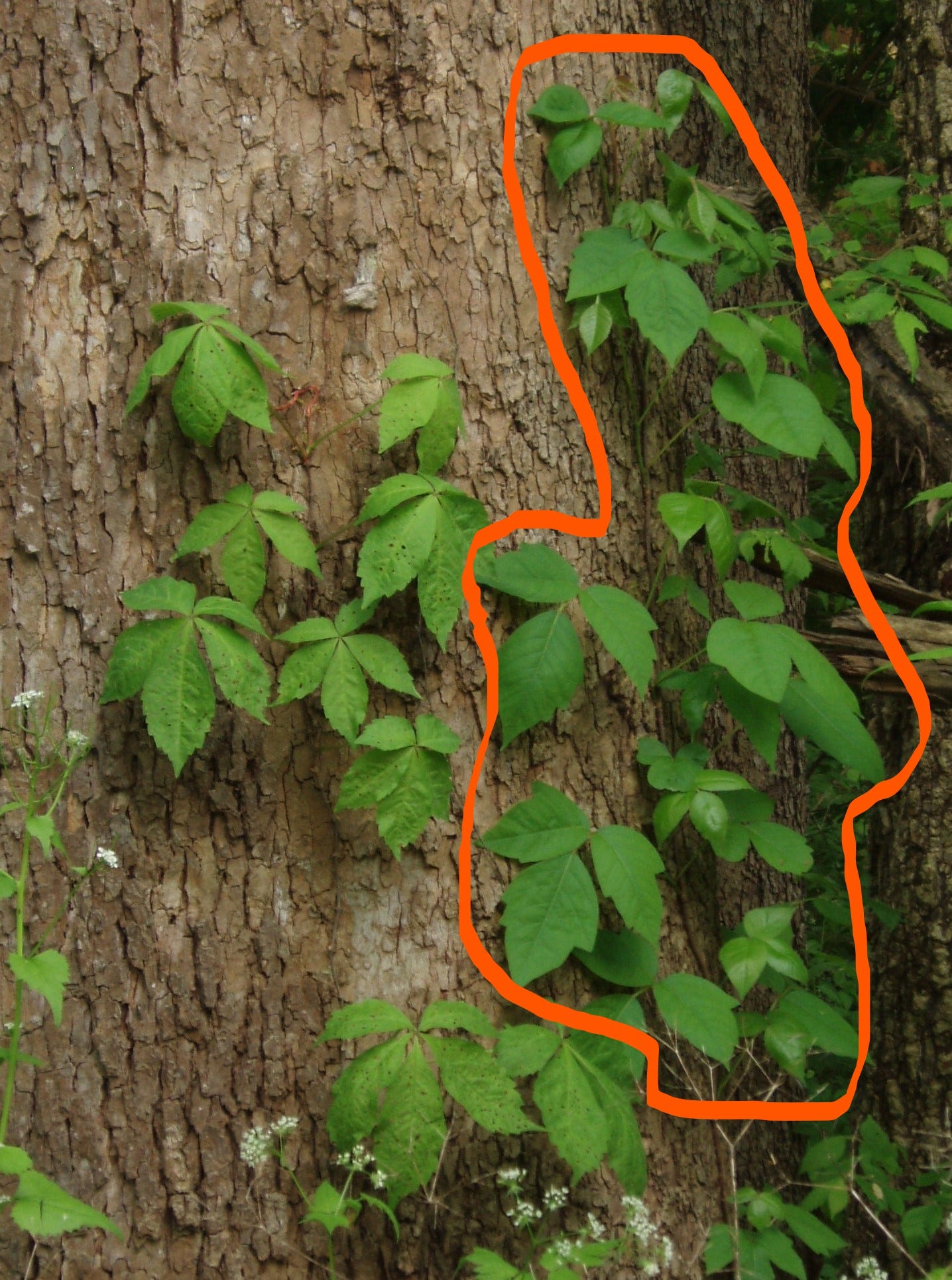
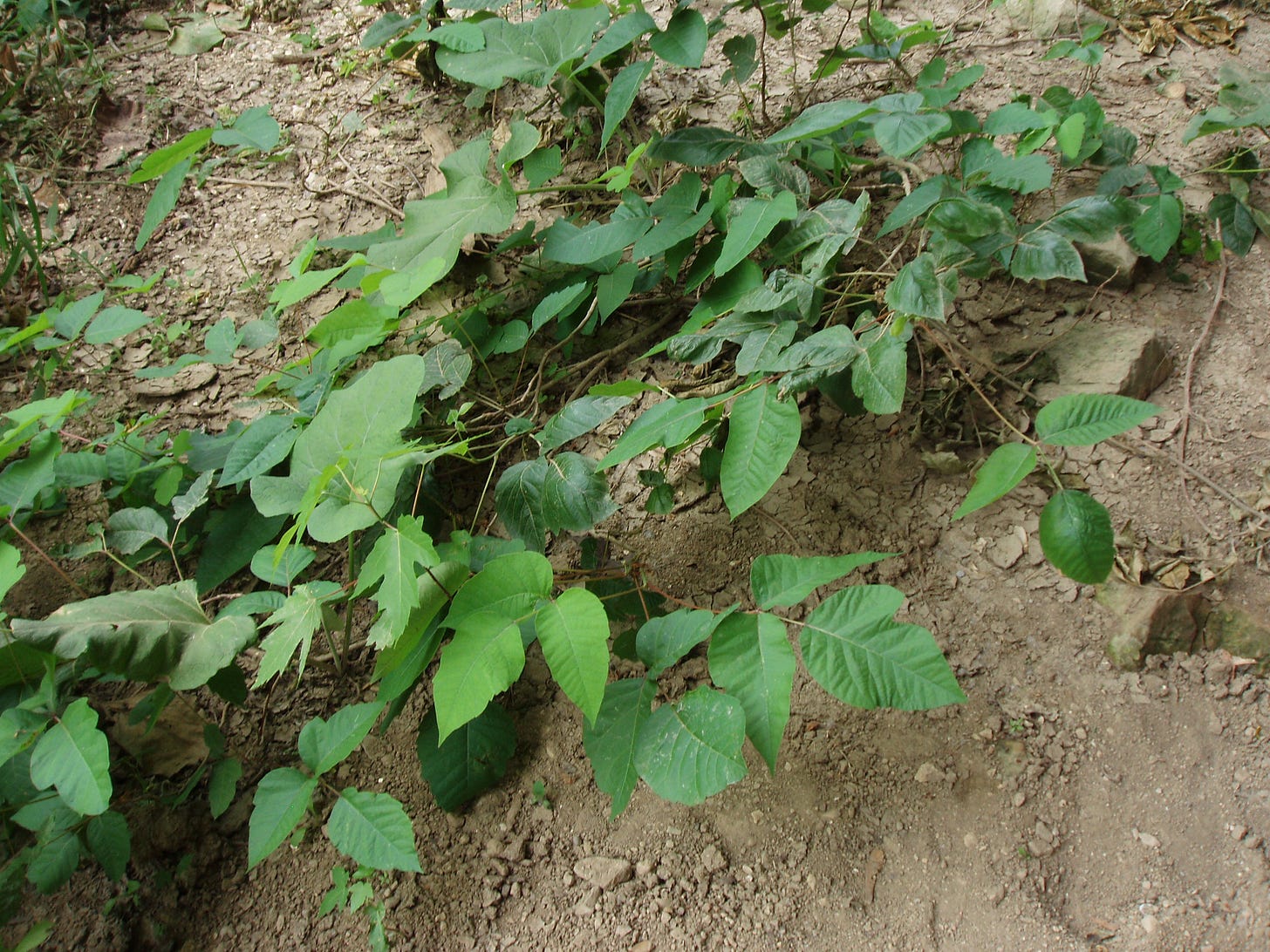
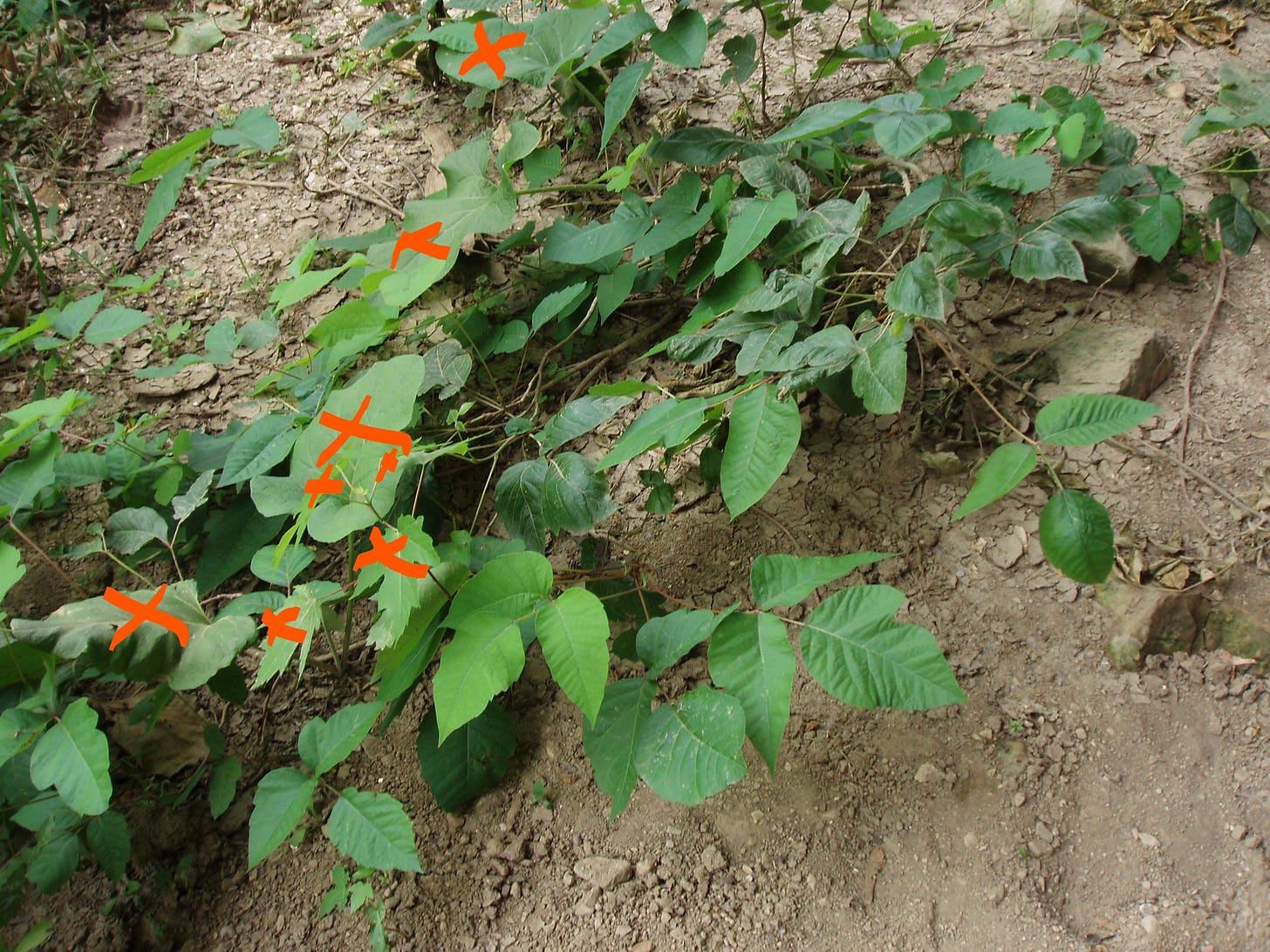
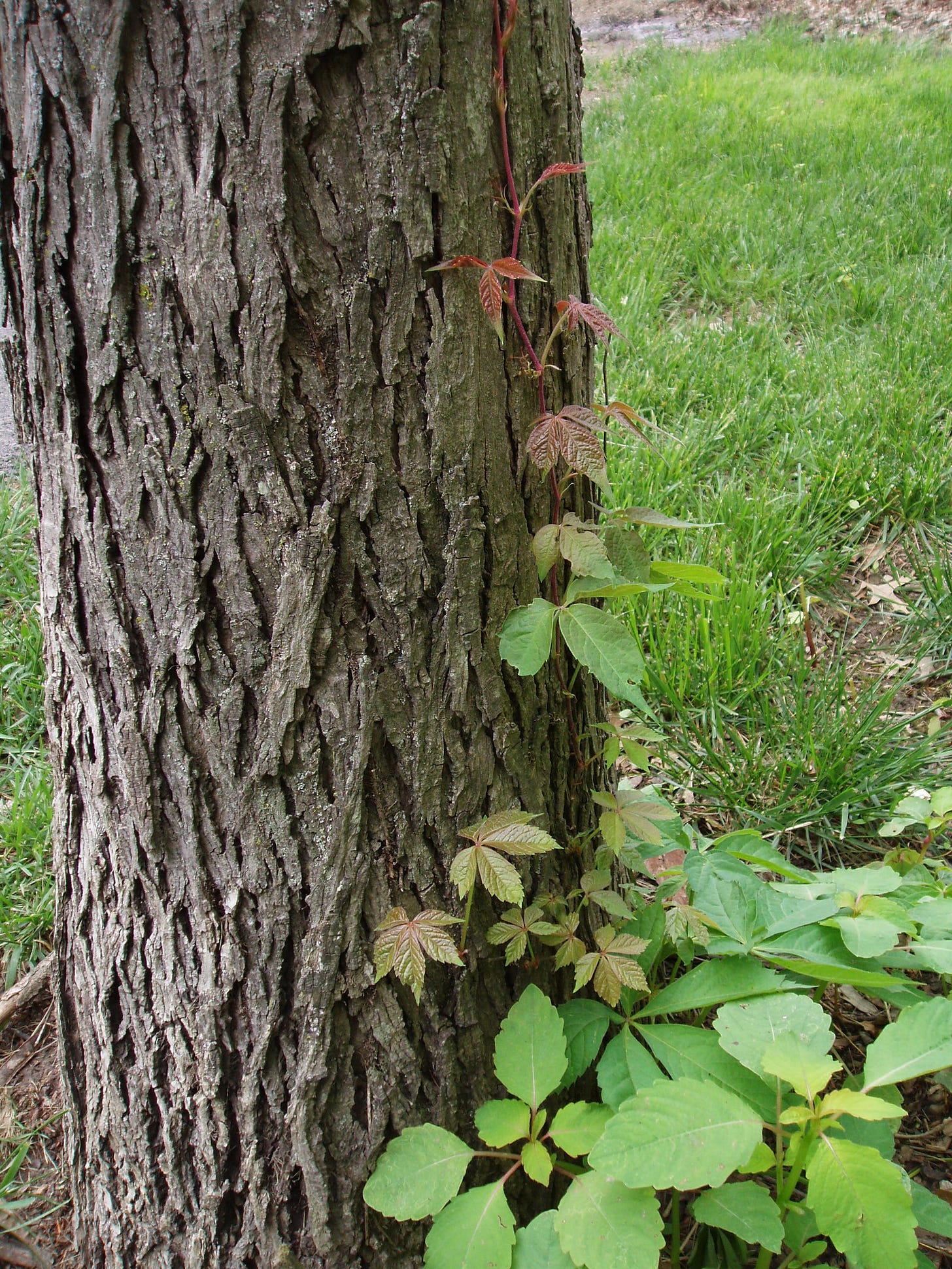
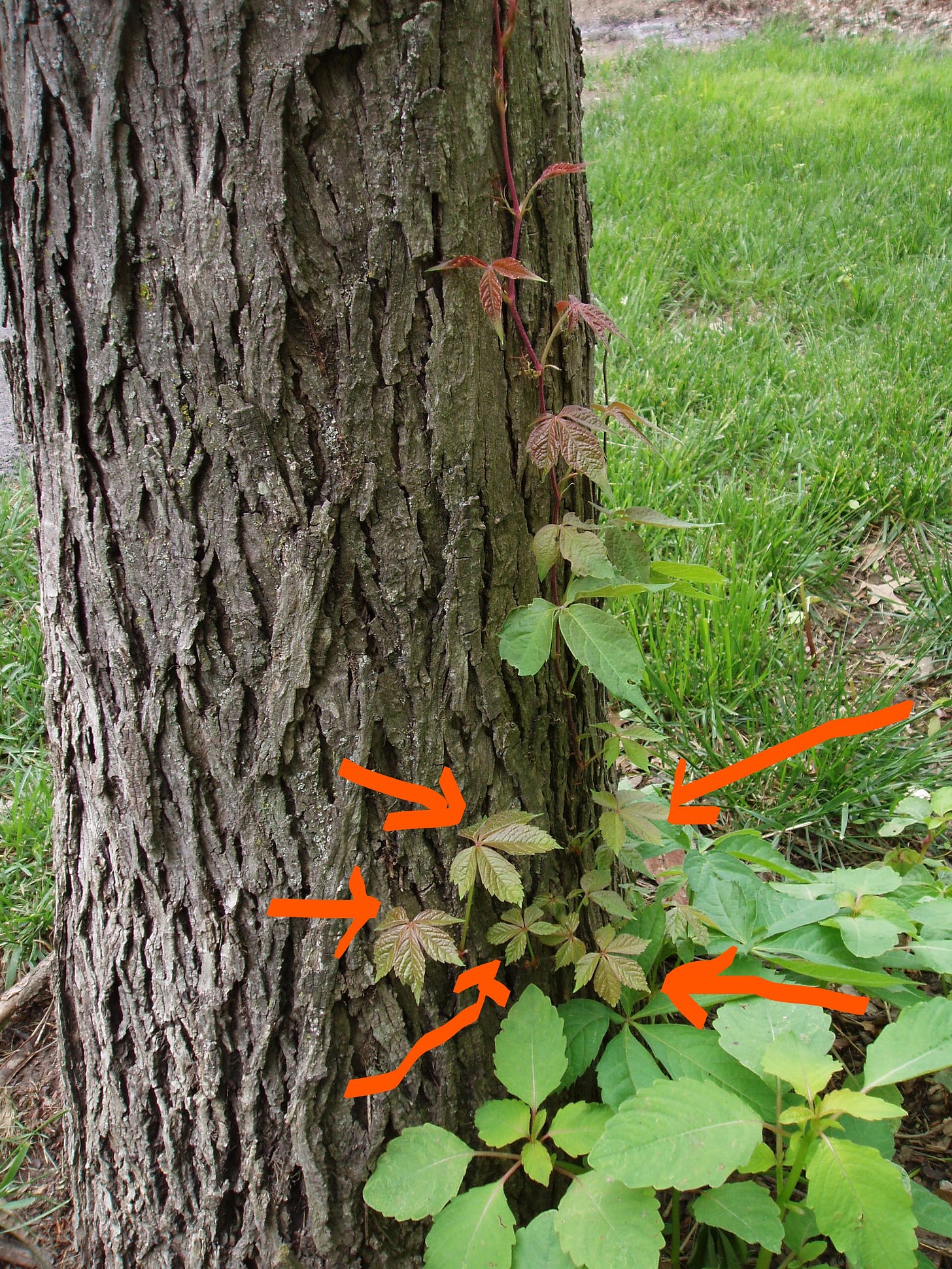
This is great! Thank you! My family has never had a problem with poison ivy, and therefore never worried to identify it. We now run around with other families that are sensitive though, and are trying to learn.
This is an excellent post. Thank you so much. I got a really nasty case of poison ivy last year on a vacant lot we had purchased. I’m like your mom, I’m so paranoid about getting it that I don’t even want to look at it for fear of the wind blowing the wrong way. 😂⛔️💨🍃